Simon Fraser Avenue in College Heights was busy with traffic and school children on Wednesday morning as the new school year officially got underway.


Simon Fraser Avenue in College Heights was busy with traffic and school children on Wednesday morning as the new school year officially got underway.

Frank PEEBLES Citizen staff fpeebles@pgcitizen.ca
Ten Aboriginal communities of the area are asking hunters to refrain from setting their sights on moose south of Prince George this fall.
A consortium of First Nations is urging hunters to use their conservation brains not their trigger fingers on a temporary basis until population numbers recover.
The Tsilhqot’in Nation and Southern Dãkelh Nation Alliance (SDNA) announced on Wednesday that they were blocking all limited-entry hunts from a plot of land extending along a northern apex touching from Prince George to Vanderhoof, a western wing extending almost to Bella Coola, an eastern wing extending to McBride and Valemount, and a southern extension almost to Clinton. “This collaboration comes in response to the dire state of declining moose populations in our territories and the lack of effective action by the province of B.C.,” said a joint statement issued by the alliance. “The situation is so dire that many Tsilhqot’in and Dãkelh citizens are deciding not to exercise their Aboriginal rights to hunt moose and going without this main source of food for the winter.”
The T ilhqot’in communities in this alliance also added that they were banning the hunting of cow moose on their parts of that

overall landscape, a decree that applied to Aboriginal and nonAboriginal alike.
“Conditions are worsening each year,” said chief Stuart Alec of the SDNA. “We have the responsibility to do whatever we can to reverse
this trend and put moose recovery strategies into place. At this crucial time, we cannot afford to have the pressure on our moose populations increase. We look to the Province and hunters to respect this closure and to aid in
HANDOUT IMAGE
our recovery efforts.”
Chief Betty Cahoose of the SDNA added that “We have been left with no alternative.... When our moose suffer, our people suffer. We are pleased to work with our neighbours on this vital issue.
Ted CLARKE Citizen staff
School is back in session and for kids it’s all about getting back into routines.
Getting plenty of sleep, eating well, and making time for exercise are keys to success in the classroom and living a long life.
It’s never too late to adopt positive lifestyle habits but the earlier those healthy practices become ingrained, the less likely kids will have to live as adults with the problems associated with obesity.

“What we know about kids in general is roughly one in three are on an unhealthy weight trajectory,” said Dr. Tom Warshawski, a Kelowna pediatrician who chairs the Childhood Obesity Foundation. “For kids, one of the major side effects is they get teased. Maybe more importantly, kids tend not to outgrow their healthy weight and in fact it gets worse.
“When it gets into adulthood we know an overweight adult dies on average three years before a normal-weight adult would, and if you’re obese, you die around seven years earlier because of chronic diseases associated with it.”
The province is trying to make healthy weights in
The situation is so dire that many Tsilhqot’in and Dãkelh citizens are deciding not to exercise their Aboriginal rights to hunt moose and going without this main source of food for the winter.
— SDNA statement
This isn’t about boundaries. This is about preserving and revitalizing a species that is crucial to all of our communities.”
Tsilhqot’in chiefs Joe Alphonse and Russell Myers Ross confirmed their support for these measures.
“Doing nothing is not an option. In the wake of the most devastating wildfires in our history, we must take a precautionary approach to wildlife management,” said Alphonse, representing a moose-centred traditional diet that now has to rely on storebought meat and other game food. “It’s not right that our members have to make this sacrifice with the province continuing with business as usual.”
— see ‘WE NEED, page 3
children and youth a priority and is targeting school-aged kids aged eight to 12 with weight management issues as candidates for the foundation’s new Healthy Family Living Program.
Working in partnership with Prince George’s YMCA of Northern B.C., the 10-week community-based program will provide health and nutrition counseling in weekly group sessions. It will engage participants in healthy activities that mesh with their own personal interests that they can do on their own time.
see HEALTHY EATING, page 3



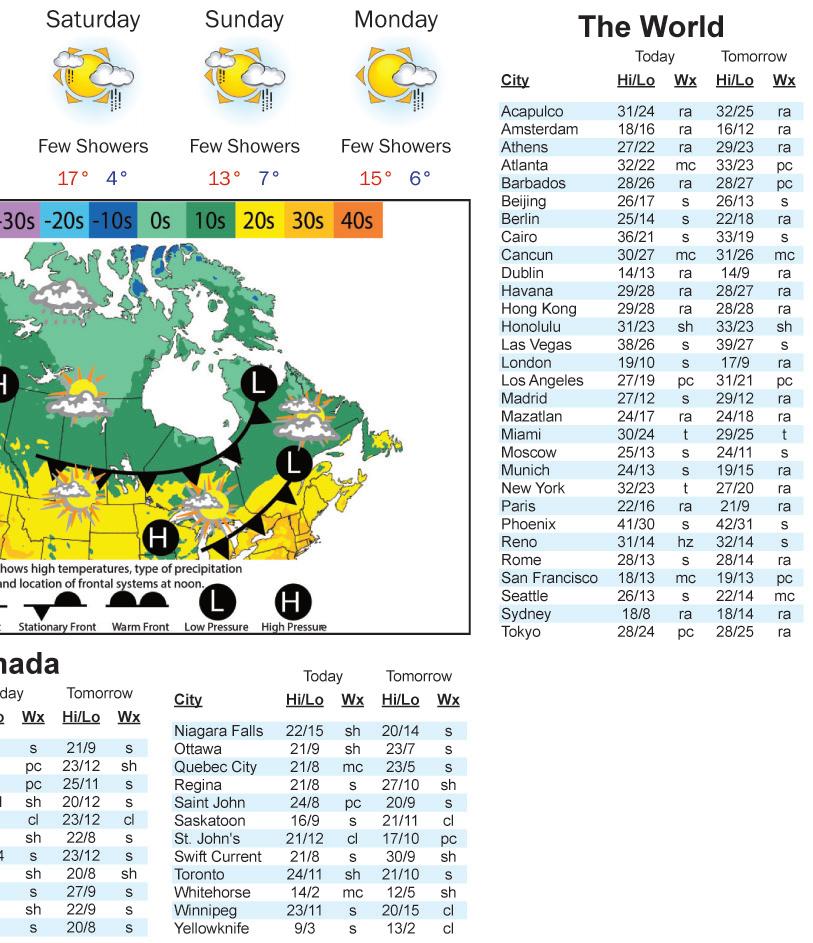


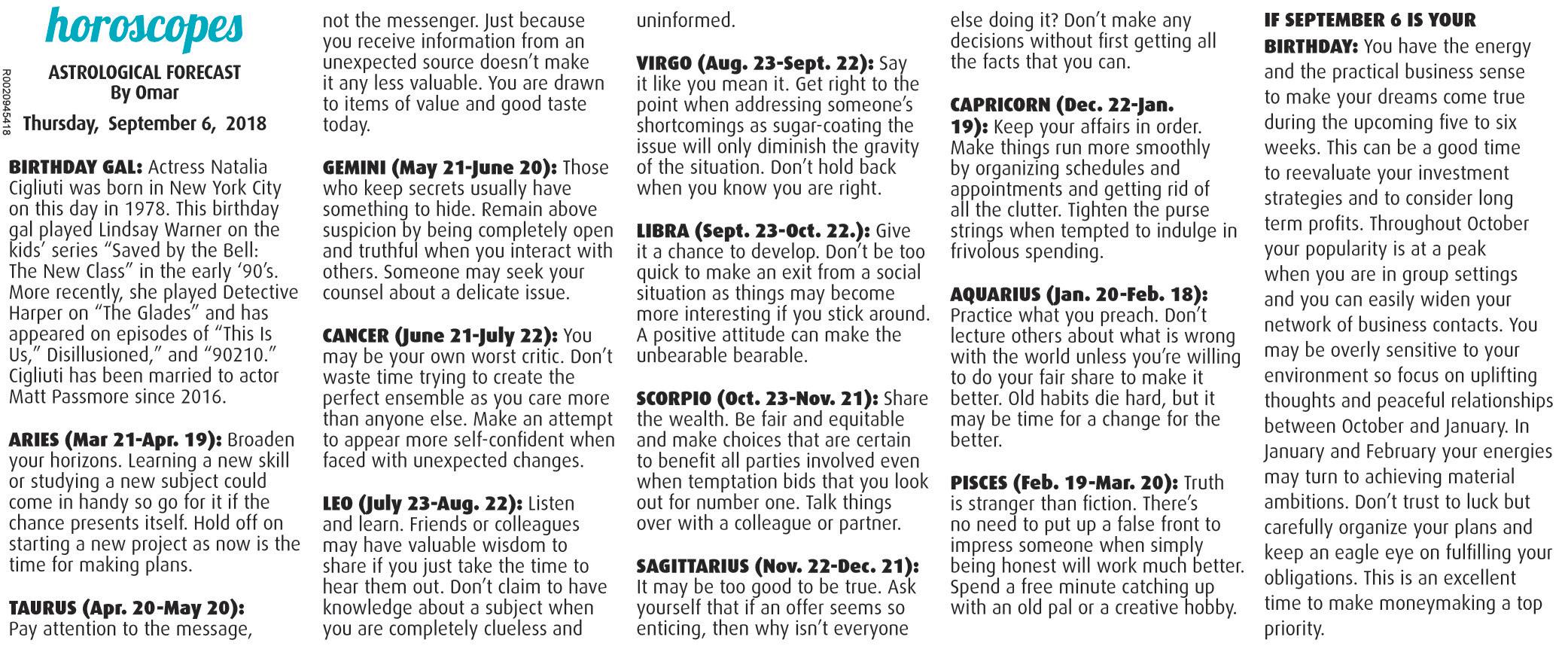


RCMP were checking motorists’ speeds on Cowart Road in front of College Heights Elementary School on Wednesday morning, which marked the start of the first day of school.
Citizen staff
An incumbent city councillor has announced intentions to earn another mandate at the municipal governance table.
Terri McConnachie has launched her campaign for a second term.
“It has been a privilege to serve citizens in the City of Prince George this past term and while we have accomplished so much, there is still work to do,” said McConnachie in a statement. “If elected, I pledge to bring the same passion, hard work and strong voice to the council table, supported by the knowledge and experience gained during my first term.”
In addition to her duties as a city councillor, McConnachie is the present executive officer for the Canadian Home Builders’ Association Northern BC and board member for the Prince George
Public Library. Past work experience includes working as the general manager for the Agricultural & Historical Association (hosts of the annual PGX/BCNE), the site manager for the Huble Homestead and the general manager for a previous local business and family entertainment centre, Bubba Baloo’s. McConnachie is presently an invested member of the Nechako Rotary Club.
McConnachie says that “the decisions made and the direction set at the municipal level affect us all at our ground level – where our homes are, where we run our businesses and raise our children, build careers and spend our leisure time and, increasingly, where we choose to spend our retirement years. I encourage citizens to get to know the candidates and to exercise their responsibility to vote on Oct. 20.”
Citizen staff
A current city councillor announced on Wednesday that he will vie for another mandate in municipal government.
With economic diversification at the top of his reelection agenda, Garth Frizzell is a three-term veteran of Prince George council. For the past nine years he has also been peer-elected to the Federation of Canadian Municipalities. If elected again, he will be FCM president in 2020-2021.
Frizzell pointed to “the need for realistic partnerships” from the provincial and federal governments for infrastructure cost-sharing.
“We need to continue pursuing support, and that means advocacy at the highest level,” he said, pointing to his past success obtaining funding for infrastructure, housing and the coming legalization of cannabis. Frizzell is an entrepreneur with more than a decade of award-winning success in technology business development. He is past-president of the Prince George Cham-
from page 1
It’s all about giving families the tools to do the things they know they should be doing and avoid the things they know are bad for them.
The program will be administered by community members rather than health professionals and it will highlight best practices that can be shared by parents with other parents. Feedback provided by participants will help refine the program so it can eventually be offered across the province.
“The entry point is a parent who’s concerned about an unhealthy weight trajectory for their kid and once the parent has that concern and they go to the first session, weight is never mentioned again,” said Warshawski.
“It’s all about healthy eating and active living for the whole family. Unhealthy eating is associated with Type 2 diabetes, as well as heart disease and cancers, regardless of your weight. We don’t talk about weight here, our premise is, if you get the habits right, you’ll get the weight that’s right for each member of the family.”
Healthy living habits are encouraged by educators in the school system but Warshawski says teachers have enough on their plates teaching kids reading, writing and arithmetic while also dealing with mental health and behavioural issues and other barriers to learning.
“If I was king, I would add 45 minutes to the school day and make mandatory physical activity each day with a qualified instructor – that’s what’s really lacking,” he said. “You’ll see that all the private schools have this because they know the link between physical activity, concentration, memory, cognition and healthy weights.
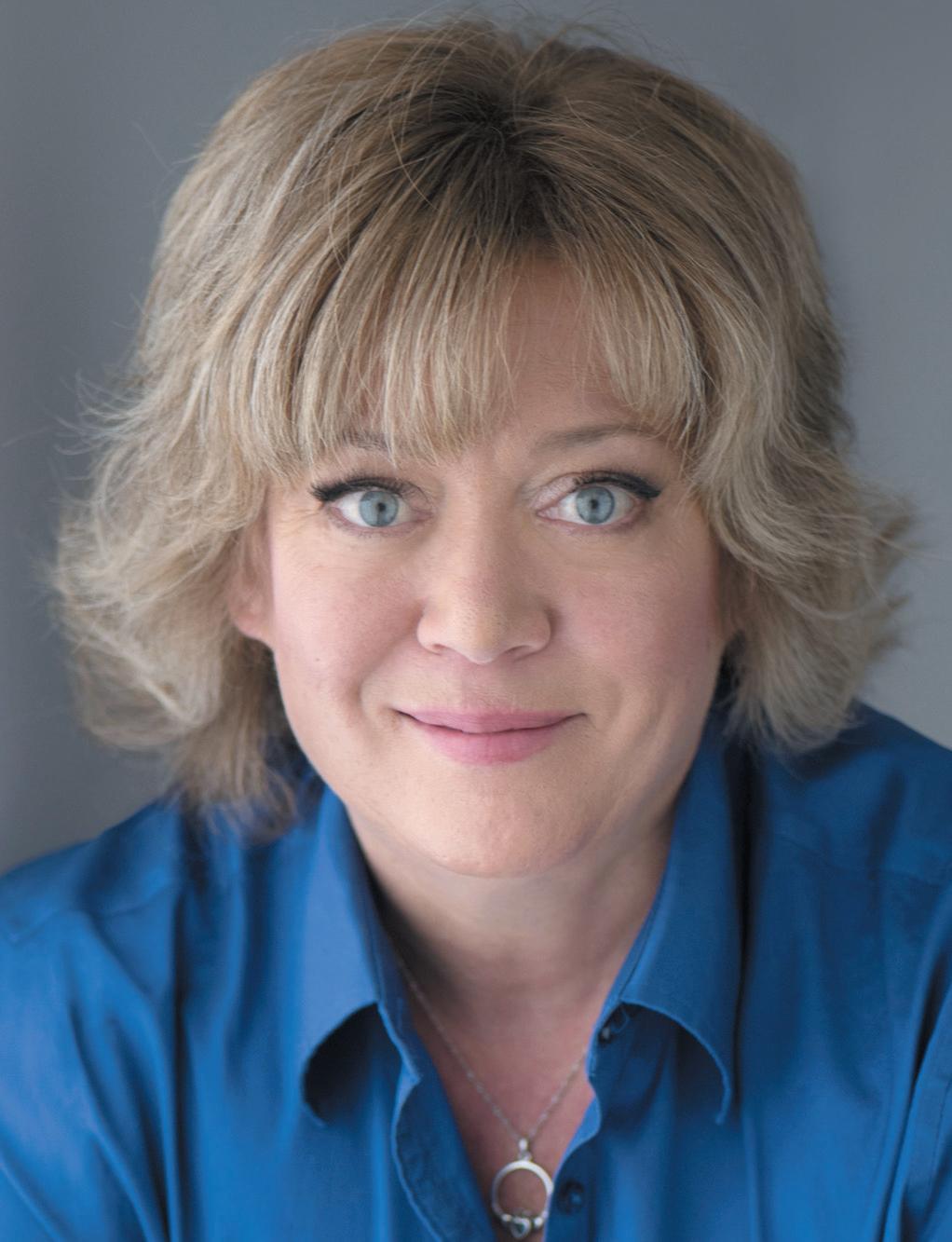
ber of Commerce. Frizzell is also an educator, currently teaching entrepreneurship, economics and international business at the College of New Caledonia.
Frizzell identified the modern forest sector as critical to the economy and spoke to the need to protect the industry.
At the same time, he pointed out the significant impact that the education and health care sector have in our city.
“The growth of high-tech has been core to my interests, and I was excited this spring to get word that the long advocated high-speed fibre-optic data transmission line north has been approved after almost a decade of advocacy,” he said. “Advocacy can pay off, as we saw with the fibre line, but it only means the start. Now we’re ready to get serious about pursuing some significant opportunities.”
Frizzell announced his intention to meet in person with all interested groups and persons, carrying out his commitment to connect with the public. He can be contacted at: garthfrizzell@gmail.com.
‘We need to prioritize conservation in this situation’
from page 1
Myers Ross said “We recognize that the B.C. government has made some efforts to work with us on moose protection and moose recovery, but they are not taking the action that is urgently needed to prevent the decline of moose populations. Moose is an important food source and food security is becoming more significant in the Tsilhqot’in due to the extreme changes in climate and environment.
“With an uncertain future, we look towards a precautionary approach. We have no option but to take the steps needed to protect the moose populations and our way of life. We need to prioritize conservation
in this situation to bring the moose population back to a healthy and sustainable level.”
These allied First Nations said court challenges were being considered if their conservation measures weren’t adhered to.
The SDNA is comprised of the Lhoosk’uz Dené Nation, Lhtako Dené Nation, Nazko First Nation and Ulkatcho Nation.
The Tsilhqot’in National Government is comprised of the Tl’etinqox, Esdilagh, Yune it’in, Tsi Deldel, Tl’esqox and Xeni Gwet’in communities. Responses were not obtained by deadline from the provincial government or the Lheidli T’enneh First Nation.
Citizen news service
OTTAWA — The Bank of Canada’s decision to leave its interest rate unchanged Wednesday could be just a brief pause that comes as it carefully follows the unpredictable twists in the country’s trade talks with the United States.
The central bank kept its benchmark at 1.5 per cent, but many experts predict another increase could arrive as early as next month.
In a statement Wednesday, the Bank of Canada said more hikes should be expected thanks to encouraging numbers for business investment, exports and evidence that households are adjusting to
pricier borrowing costs.
The bank, however, also made a point of saying it’s closely watching the renegotiation of the North American Free Trade Agreement and other trade policy developments, which could have negative impacts on the Canadian economy. It’s particularly concerned with the potential implications for inflation.
Last week, U.S. President Donald Trump announced he had reached a bilateral trade agreement with Mexico that would replace the three-country NAFTA. He put pressure on Canada to join the U.S.-Mexico deal, but after fresh talks restarted last week Ottawa and Washington have so far been unable to reach an agreement.
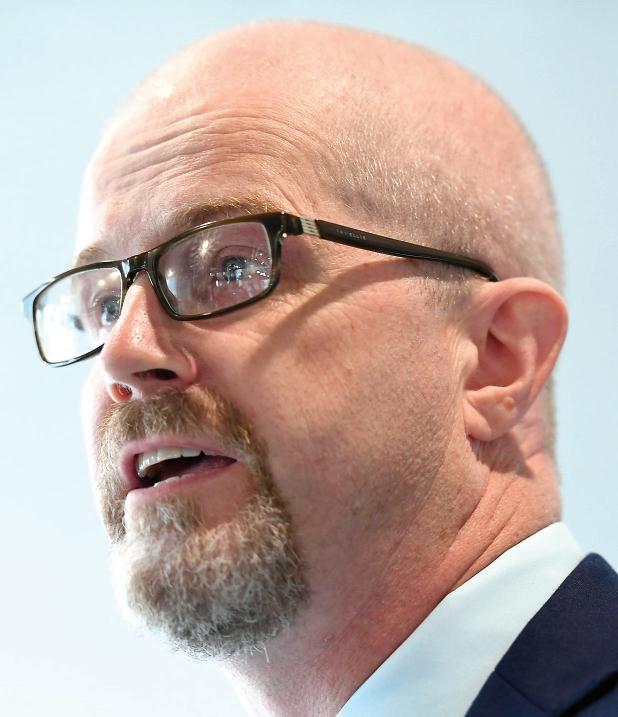
“We’ve actually set ourselves up here for an element of inequality that we don’t accept in the healthcare system that we accept in the education system and that should be addressed systematically. We as a province have to look at how we really want our children to learn and evolve and I think we’re falling short in the activity end at school.”
More information about the program and an online registration form is available at www. familyhealthyliving.ca
• Sleeping well. Make sure the foundation for sleep is set to avoid being tired at school, which becomes a barrier to learning. Warshawski recommends kids 12 and younger get 10 to 12 hours of sleep per night. Set regular bedtimes and take away the screens in bedrooms. Sleep deprivation can upset the body’s metabolism, increasing the chances of gaining weight.
• Eat a good breakfast. That means skipping the donuts and Frosted Flakes to avoid sugar, which the body tends to process quicker, leading to midmorning hunger pangs. Eggs, whole fat yogurt, oatmeal or pancakes are better breakfast choices.
• Pack nutritious lunches. Hold off on granola bars and eat fresh vegetables instead. Avoid fruit juice in packed lunches and limit sugary drinks to no more than one per week. It’s much better to eat your fruit and drink your water.
• Walk to school. If your kids live far from the classroom, drive part way there and walk the rest of the way and get there early so they can play in the playground before the morning bell rings. A bit of physical activity early in the day helps them concentrate better in class.
• Limit screen time. Designate a maximum of two hours a day, whether that’s TV time, video games or online surfing. Kids are naturally active unless they’re tethered to a screen. Video games are designed to be addictive and that has to be held in check.
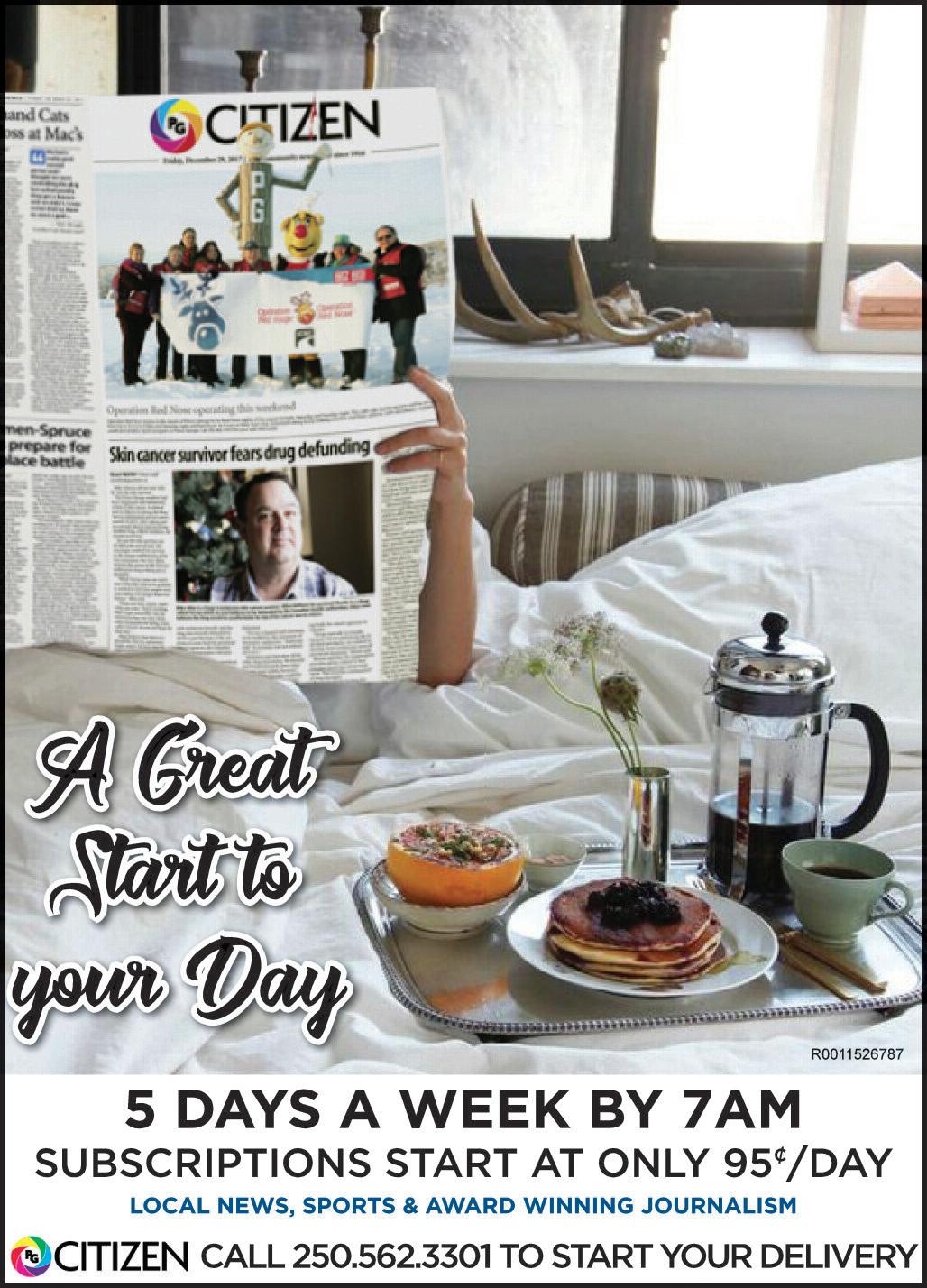
After the last editorial in April about former Prince George mayor Shari Green throwing her name in the running for the Conservative nomination in South Surrey-White Rock for the 2019 federal election, many phone calls and emails came in.
One of those communications suggested taking a closer look at the Elections Canada candidate campaign returns for the Dec. 11, 2017 by-election in South Surrey-White Rock to fill the seat after Conservative MP Dianne Watts resigned to run for the leadership of the B.C. Liberals.
In the byelection, federal Liberal Gordie Hogg defeated Conservative Kerry-Lynne Findlay, a former cabinet minister in the Stephen Harper government, by 1,600 votes.
It was seen as an embarrassing loss for the Conservatives and their new leader Andrew Scheer.
Green served as Findlay’s official agent
and campaign manager in that tight race last December.
Findlay’s campaign spent $87,502.59 during the four-week byelection. The single biggest expense of that campaign was the $10,500 Green billed for her services. She also billed the campaign two other times for expenses of $105 and $110.
William Healy also billed Findlay’s campaign $5,000 under the “official agent, campaign manager” category, along with about $600 in other expenses.
To put Green’s wage for four weeks work into context, Hogg’s campaign spent $87,942.81. Hogg’s official agent and campaign manager, William Brooks, billed the campaign just $2,500, plus about $2,300 in other expenses.
To make a comparison closer to home, Conservative candidate Todd Doherty spent $73,974.85 in his successful 2015 campaign to win the Cariboo-Prince George riding. Gerald Pinchbeck, Doherty’s official agent and campaign manager, received six biweekly payments during the long campaign
for $960 each or $5,760 in total, with no other expenses. In other words, Doherty and Hogg paid their campaign managers about $6,000 to run a winning campaign while Findlay paid Green nearly $11,000 in a losing cause.
Hard to say if it would have made a difference but South Surrey-White Rock Conservatives are certainly wondering if Findlay could have squeaked out a win if Green had spent $5,000 more on the election and $5,000 less on herself.
To be fair, Findlay was parachuted into the riding from Delta-Richmond East, which she lost handily in her re-election bid in 2015. Meanwhile, Hogg is a former mayor of White Rock who sat as a B.C. Liberal MLA for Surrey-White Rock for 20 years.
Seen in that light, it would also be unfair to accuse Green of sabotaging the 2017 byelection because she had her eyes on being the Conservative candidate less than two years later. A newcomer to the riding, she will have a difficult time unseating the far better known and better connected
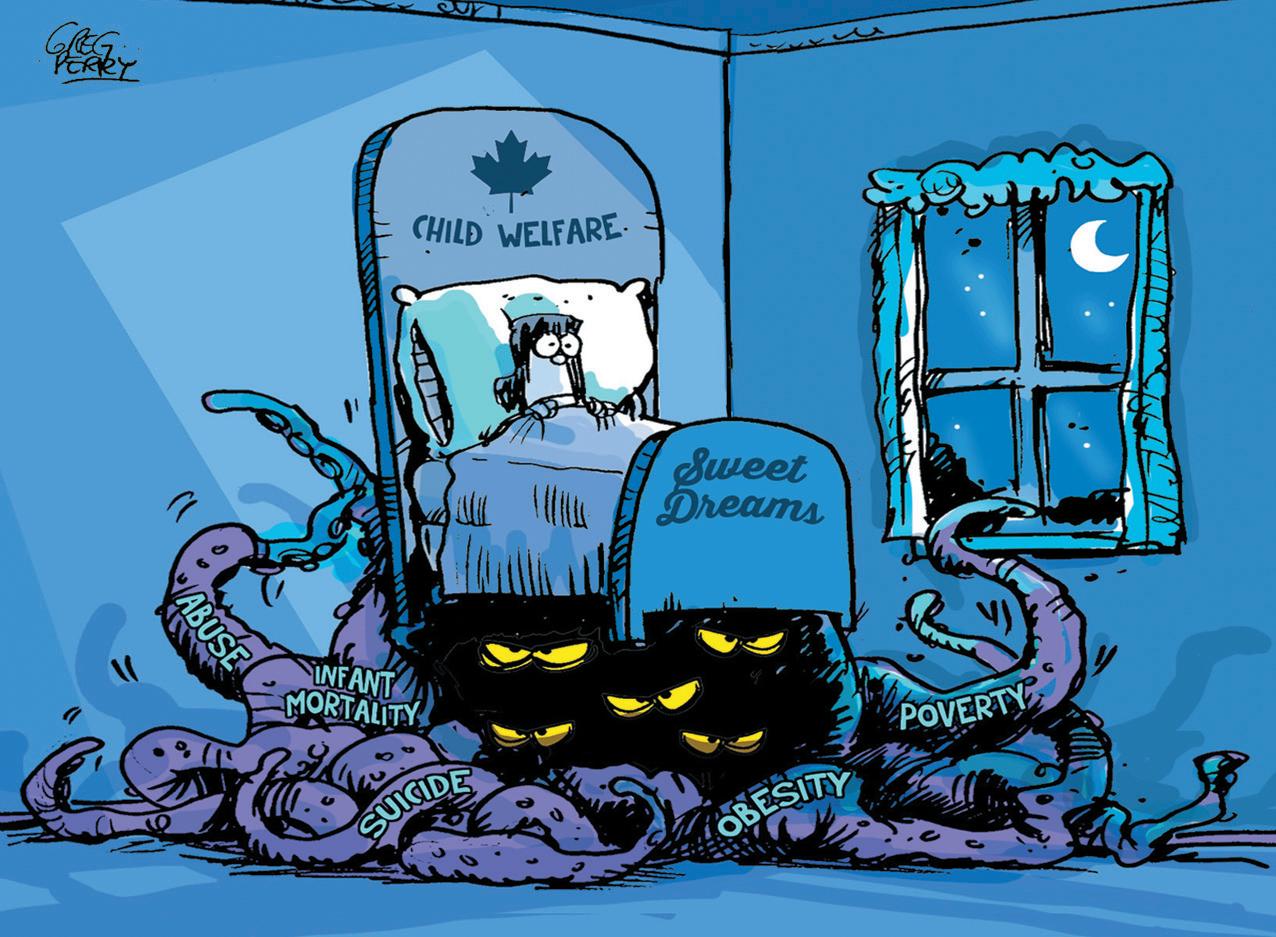
The wildfires and recent upheaval in my hometown of Fort St. James evoke special and distinct memories.
I’ll never forget hitting the Zoo Pub and the Cabaret for the first time and bustin’ moves to the likes of Bob Seger, Boney M, Trooper and a discoed Rod Stewart (and I will finally admit, ABBA).
As I do recall, we did have our share of extra terrestrial visitors in the Fort back in the seventies when I was growing up. Reports of UFOs sometimes made the local and other papers. As I recall, the aliens seemed to have an affinity for zooming down Sowchea Bay Road, or hovering over Murray Ridge ski hill or Mount Dickinson. I’ve always wondered why the alien ship’s fuel had the distinct odour of burning rubber. The locals always packed the Fort Forum Arena to watch the men’s hockey teams, The New Caledonia Blues and the Necoslie Chiefs, play incredible and exciting games of hockey. Sometimes they would play tournaments with teams from Prince George, Vanderhoof, Fraser Lake, and other communities. Hockey has always been an integral part of the Fort, and many great players from there have since made it to
the pro and junior ranks.
Over the years, the Fort has had it’s share of great tragedy and it is in those bleak, dark moments I was so uplifted and proud to witness the people from all the communities in and around the Fort come together and chip in, and sacrifice of themselves to overcome our various sorrows, and hardship. To Matt, Kora, Barry, Johnson, Gordie, Daniel and all the other sons and daughters we’ve lost over the years, we love you and will always remember you. A great big thank you to the firefighters, first responders from home and abroad.
Fabian Teegee Prince George
B.C. needs proportional representation. Over the last few years I’ve been looking closely at democracy in Canada. It was really surprising to see that Canada elects governments that have less then 50 per cent of voters supporting them. This is the same for our provincial governments. Isn’t Democracy the will of the majority of the people? The government of B.C. more often than not has less then 50 per cent support of citizens but is given all the power. Our government should have the support of the majority of people.
Political parties should get the amount of power they deserve. The reason we don’t have a great democracy is because of our first past the post system of electing MLAs. It is outdated, broken and needs fixing. It’s a winner take all voting system based solely on individual ridings, but the winner doesn’t need 50 per cent of votes in a riding. Our MLAs often have less then 50 per cent of support in their riding. Our government, more often then not, has less then 50 per cent of vote and all the power. We need to do better. Proportional representation is a way we can make our democracy better and actually democratic. It makes sure our government has the majority of people supporting it. If the Liberal party gets 40 per cent of the votes in B.C., then it gets 40 per cent of the power. Political parties get the power they earn, no more, no less. It gives more power and choice to the people. Your vote will always count and isn’t wasted. It is a simple fix, it’s common in most democracies around the world, and its time we bring it to B.C. The referendum is coming soon and we can make proportional representation happen. Vote yes for proportional representation.
Daniel Kelly Prince George
LETTERS WELCOME: The Prince George Citizen welcomes letters to the editor from our readers. Submissions should be sent by email to: letters@pgcitizen.ca. No attachments, please. They can also be faxed to 250-960-2766, or mailed to 201-1777 Third Ave., Prince George, B.C. V2L 3G7. Maximum length is 750 words and writers are limited to one submission every week. We will edit letters only to ensure clarity, good taste, for legal reasons, and occasionally for length. Although we will not include your address and telephone number in the paper, we need both for verification purposes. Unsigned letters will not be published. The Prince George Citizen is a member of the National Newsmedia Council, which is an independent organization established to deal with acceptable journalistic practices and ethical behaviour. If you have concerns about editorial content, please contact Neil Godbout (ngodbout@pgcitizen.ca or 250-960-2759). If you are not satisfied with the response and wish to file a formal complaint, visit the web site at mediacouncil.ca or call toll-free 1-844-877-1163 for additional information.
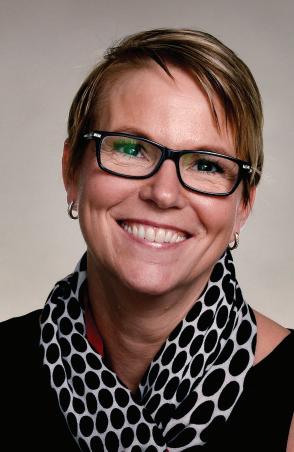
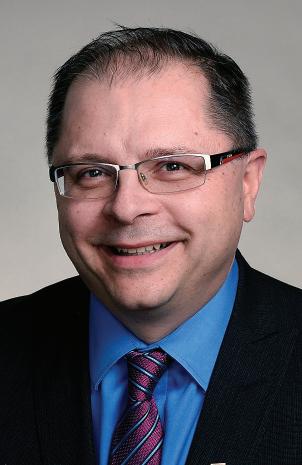
Mailing address: 201-1777 Third Ave. Prince George, B.C. V2L 3G7
Office hours: 9:00 a.m. to 5:00 p.m., Monday to Friday General switchboard: 250-562-2441 info@pgcitizen.ca General news: news@pgcitizen.ca Sports inquiries: 250-960-2764 sports@pgcitizen.ca
Classifieds advertising: 250-562-6666 cls@pgcitizen.ca
Hogg next fall. Even if Hogg is weighed down by Trudeau’s adamant support of the Trans Mountain pipeline, he should have no problem swatting off a one-term Prince George mayor who was unable to win the Conservative nomination in her own turf against two lesser-known candidates. But to get a chance at Hogg, she first she has to win the Conservative nomination in South Surrey-White Rock. Card-carrying Conservatives will cast their ballots on Sept. 22. Green failed to keep an existing Conservative riding in Conservative hands and away from Justin Trudeau’s Liberals but she made sure she got paid well, no matter the outcome.
If the other reasons in the April editorial weren’t enough (unpopular one-term mayor, sketchy political resume), Green’s expensive failure as a campaign manager in South Surrey-White Rock should be just one more reason for Conservatives in that riding to look elsewhere for their 2019 candidate.
— Editor-in-chief
Neil Godbout
One of the more infamously cynical quotes in the history of modern sports is attributed to Michael Jordan, who, declining to endorse a U.S. Senate candidate against a racist incumbent, allegedly quipped, “Republicans buy sneakers, too.”
The line itself may be apocryphal, but its symbolism is surely not: For decades, it circulated as conventional wisdom within the sports industry to explain why the archetypal 1960s activist athlete had vanished from view. That era was, not coincidentally, the same one in which revenue from TV and merchandise rights exploded.
On Monday, by debuting an ad celebrating the anniversary of its “Just Do It” slogan that features quarterback-provocateur Colin Kaepernick, Nike has effectively put Jordan’s theory to the test: Will #MAGA believers still buy sneakers, too? Or is there a ripe enough target to be carved out among the self-styled resistance?
The very premise of these questions, however, shows how deeply delusional branding has rendered us as consumers. At one point in human history, products were bought and sold for their utility. Now, because of the massive and unchecked expansion of corporate power – not just in terms of market share but actual mindshare – products must represent values, lifestyles and, in the age of U.S. President Donald Trump, political ideologies. But my sneakers, ultimately, cannot be woke. They’re just fabric.
They’re fabric, moreover, that was stitched together by a subcontracted laborer in the developing world who probably was paid as little as possible and whose income represents but a fraction of what Nike will charge for each pair – or what endorsees such as Kaepernick will reap for touting them.
Corporations have little interest in foregrounding her plight (and it’s usually a “her”), but that’s what circa No Logo “woke branding” used to mean: thinking about the marginalized who actually make our stuff rather than the posturing it affords those privileged enough to own it.
This is the long con that advertising has played, and it has played it well. The fact that, in the wake of this week’s Kaepernick flap, the media – social and mainstream alike – worked itself into a frothy, viral tizzy means that Nike already won, independent of Dow stock gyrations or free publicity estimates. Whether you eagerly retweet the ad or torch your sneakers in the front yard, you are already acceding to the delusional anthropomorphization of Nike. And despite what some presidential candidates might have claimed, corporations are still not people.
That Nike would make this play is simultaneously surprising and obvious. It is surprising given how much the social justice protests of recent NFL seasons rattled ratings and startled sponsors, from DirecTV to USAA to Anheuser-Busch to Papa John’s. Following Jordan’s dictum, conventional wisdom had held, until this week at least, that Kaepernick and his cause were bad for business. Yet the commercial gambit is equally obvious in retrospect. For one thing, our brand culture zeitgeist seems to demand it. In an American era in which almost nothing escapes politicization – and, more precisely, nothing escapes the megalomaniacal gravity of “What does President Trump think of it?” – corporations increasingly assume they have to tiptoe beyond milquetoast social responsibility platitudes to take edgier stands. Like callers on sports talk radio, they’re supposed to have a hot take. Hence, we are now asked, as consumers, questions of ever greater political specificity: Where does my light beer stand on immigration reform? Should I fly with a domestic carrier that’s in favor of background checks? Does this burger support net neutrality? These are all valuable, important questions and I have my own biases in answering them. But it is utterly ridiculous that brand culture has subsumed so much of our public space – and mental space – that it becomes the crucible for that political participation, especially when practices like, you know, actualvoting limp along. Corporations don’t really care about the adjudication of these issues beyond their shareholders’ bottom line. They can’t. It’s not in their fiduciary responsibility. Ultimately, Nike’s adoption of Kaepernick squares perfectly with the meritocratic capitalist ethos it has cultivated for decades: Anyone can pull themselves up by their own Air Jordans, if they have enough gumption to work hard. Yet Kaepernick’s actual grievance and his protest evinces quite the opposite message: that the playing field is not level.
Indeed, the almost perfect counter-metaphor for this week’s ad was also provided by Nike and Jordan, who, at the 1992 Olympics, draped a U.S. flag over the shoulder of his award ceremony jumpsuit to hide the Reebok logo. Two decades later, Nike revived that diss as a branded T-shirt. It now retails on eBay for $39.99. Michael Serazio, an assistant professor of communication at Boston College, is the author of Your Ad Here: The Cool Sell of Guerrilla Marketing.
Display advertising, digital advertising and website inquiries: 250-562-2441 ads@pgcitizen.ca Reader sales and services: 250-562-3301 rss@pgcitizen.ca Letters to the editor: letters@pgcitizen.ca
Website: www.pgcitizen.ca
Website feedback: digital@glaciermedia.ca
Member of the National Newsmedia Council A division of Glacier Media

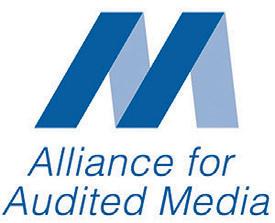
Arthur WILLIAMS Citizen staff awilliams@pgcitizen.ca
The Queensway Court Motel will be shut down on Oct. 1, after city council unanimously upheld a decision by city staff to suspend the motel’s business licence for six months.
In a special meeting on Wednesday night, council considered an appeal by the motel’s owner, Soo Hyun Won, requesting the suspension be cancelled or postponed to allow Won to make further security improvements to curb crime at the motel.
Prince George RCMP Supt. Warren Brown was called as the first witness in the courtlike proceeding by the city’s lawyer Jarrett Plonka.
Brown said the Queensway Court Motel is “one of the top 10 locations” police are called to in the city.
“From January to June 2016 compared to this year, we’ve seen an increase in over 100 calls. We’ve not seen an increase in calls of that rate anywhere else,” Brown said. “There was a home invasion there last night. A resident (of the motel) phoned her mother and reported that individuals came in with guns and took money and some belongings.”
The concerned mother phoned the RCMP, who investigated and found that not only had the woman been robbed, but several other suites had been victimized or otherwise involved, Brown said.
In May this year a man was shot at the motel in an attempted murder, he added, but the majority of calls involve dropped 911 calls, thefts from vehicles, disturbances, prostitution and drug trafficking. In a threemonth period in 2017, RCMP were called to the Queensway Court Motel 188 times, compared to between 36 and 84 times to similar-sized motels and hotels in the city.
Calls to the motel frequently require multiple officers to respond, Brown added,

RCMP officers investigate a shooting at the Queensway Court Motel on May 1. City council upheld a staff decision to suspend the motel’s business licence for six months, beginning on Oct. 1
because the phone system at the motel was routed through a central line – making it impossible to determine which room a dropped 911 call came from without canvassing the rooms, he said.
The motel has been on the RCMP’s radar since 2016, when concerns raised by area residents promoted police to reach out to Won and offer him suggestions to improve security, he said.
“Any steps taken to date haven’t been very effective,” Brown said.
By 2017, it had become the local “fishing hole” for police, who would patrol by looking for stolen vehicles and conduct undercover operations to bust drug dealers, he said. A report prepared by two constables at the detachment seeking input from residents and business owners in the surround-
Frank PEEBLES Citizen staff fpeebles@pgcitizen.ca
Denise Jones has such a warped sense of humour that she saw a troupe of male strippers as an opportunity.
No, not that kind of opportunity. Perhaps this needs some deeper explaining.
Jones is a theatrical comedian. She is an actor, improvisation specialist, arts administrator, and now she can add in “male stripper” to the list. Your eyes are not playing tricks on you, and this is not a gender identity test. She, a self-identifying female, is now a stripper of the male persuasion. Except, she never actually strips. The only real peeling is the laughter.
Jones has set a new kind of standard, one that smashes all previous glass ceilings. She attended a performance by The Comic Strippers, a comedy group populated by her friends from around the Vancouver performing arts community, and she didn’t just love the show, she wanted to be in it.
The chief cook and shoe polisher with The Comic Strippers, Roman Danylo, didn’t get his bow tie in a knot. Another knot. A naughty knot. He immediately saw the sets appeal.
“I actually wormed my way in. I thought the show was so great, why wouldn’t I want to be part of that?” Jones said. “Roman just said huh, yeah, all the dudes in the cast are fictitious male strippers. I could be just as fictitious as the next guy.”
Guy? Is that the word, when not everyone is male? Sure, “guy” has been widely characterized as a nongender-specific term, but that isn’t consensus, and suddenly words and definitions matter in the Comic Strippers world.
“I do actually struggle with gender non-binary issues,” she said. “That goes back a long way. Like when I might be on stage and it occurs to me to say ‘hello ladies and gentlemen.’ Knowing what we know, now, that seems odd to say. It’s incomplete, it isn’t necessarily accurate, and it isn’t inclusive.”
Rather than flip through the dictionary, she tuns to the true painters of lexicon: comedians. One of her friends uses the phrase “people of earth” to address crowds. Another exercises the word “guls” because it conveniently packages guys and gals.
Speaking of packages, The Comic Strippers are each called “chips” and none of them ever actually disrobes. With her fake moustache and manly wig, Jones might actually be wearing more clothes than her on-stage colleagues. No matter.
“No one ever addresses the fact that I’m a woman. That is not part of the show. It’s not something we make anything of,” Jones said.
“And I love that, because it makes it automatically more inclusive. I just happen to be a male stripper. Take me as I am. Everyone is taken as they are.”
It doesn’t even come up in the “chip checks” – the staff meetings where the various cast members discuss new material, analyze the recent shows, and keep the act in motion.
There are many “chips” all called in from the performers of the Lower Mainland scene. Sometimes a show will use up to six cast members, many as low as four, and they work on a rotational basis so everyone involved can stay fresh and pursue other gigs as well.
“I’ve been able to do a lot in my career as an actor, an improviser, the former artistic director for Vancouver TheatreSports League for the past five years, and honestly this is the most joyful show I’ve ever been part of,” she said.
“It’s just so stupid and fun and doesn’t have to delve deeper into issues. It’s just so body positive and joyous. That’s my only end goal. If I get to make people feel good and take a break from the fresh bad news on the planet, then that’s the job for me.”
Up there she’s just another one of the guls.
The Comic Strippers will strut their stuff on the stage of the Prince George Playhouse on Friday and Saturday. Tickets are moving fast. Get them online anytime at the Central Interior Tickets website.
fixing the problems.”
He installed a new phone system to try to reduce dropped 911 calls, installed three more security cameras – bringing the total number to 10 – installed locked security doors limiting access to the second floor rooms, built a fence limiting access to the parking lot area and attempted, but was unsuccessful, in hiring a security company to conduct regular patrols, Davis said.
“Mr. Won has shown that now, in 2018, he is dedicated to improving the situation at the Queensway motel,” she said. Won and his family rely on the motel for their livelihood and could end up bankrupt if the city suspends its business licence, Davis said.
The result was that between Aug. 1 and Aug. 21, there was a more than 60 per cent decrease in calls to the police compared to previous years, Davis added.
“There is no excuse that this went as long as it did,” Coun. Brian Skakun said. “Some of the comments in here in the report are, ‘There is noise every night – yelling and screaming...” and so on. I’m not here to give Mr. Won a break, the people who deserve a break are the people in the neighbourhood.”
ing area found that many had stopped bothering to call police, because they’d lost faith that anything would be done, he said.
Won said he and his family bought the motel in 2010 and managed it full time until last year, when his brother took over as resident manager. He said that the situation at the motel went downhill, starting sometime between 2013 and 2015.
“I tried to do my best to deal with it,” Won said. “That was not a very good time for my family and me. I tried to sell the motel.”
The problems at the motel caused problems within his family, he said, and often he was alone trying to deal with the issues, he said.
Won’s lawyer, Jenna Davis, said since receiving the notice from the city Won “immediately took real and substantial steps to
Skakun’s comments were echoed by others on council.
“I don’t believe Mr. Won is sorry that he’s operated an unsightly property,” Coun. Terri McConnachie said. “He’s not sorry for making the residents of this neighbourhood less safe – not just feel less safe, less safe.” Coun. Murry Krause said city council needs to act to protect the residents of the neighbourhood, and the motel.
“If the residents have lost confidence in the RCMP, I don’t want them those residents and neighbours to lose confidence in us,” Krause said. “I think this sends a message to landlords. The people who live in accommodations in this city deserve better.” Won and Davis declined to comment on the result of the proceedings.
There are around 90 naturally occurring elements found on Earth. I say “around” because neither technetium nor francium have ever been found in isolatable quantities. On the other, there is some evidence plutonium might be available in some uranium deposits.
This points out one of the fundamental facts about the composition of our planet – the distribution of elements is quite diverse.
The atmosphere is mostly nitrogen (78.09 per cent) and oxygen (20.95 per cent) by volume. Argon makes up 0.93 per cent and was discovered when scientist liquefied the other two gases from air. There was always a small residual amount of gas left in the container no matter what they did. This is where argon derives its name as it was considered “too lazy” to condense as a liquid.
Carbon dioxide makes up most of the remainder of the atmosphere (0.04 per cent) but the other noble gases (helium, neon, krypton, xenon, and radon) are present in trace amounts along with gases such as nitrous oxide and chlorine. There are even natural trace amounts of hydrocarbons.
These concentrations are for dry air and do not take into account the amount of water vapour in the atmosphere which can vary significantly. It averages about one per cent at sea level and 0.4 per cent for the entire
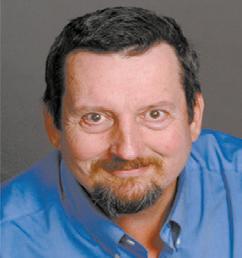
atmosphere but can reach four per cent when raining.
The atmosphere doesn’t contain large quantities of iron, silicon, or other minerals. It is made of light gases.
The oceans, on the other hand, are dominated by water. As are streams, lakes, and glaciers and anything else we would consider part of the hydrosphere. There are other elements present in water due to erosion. Minerals such as sodium chloride and magnesium carbonate contribute the saltiness of the salt water bodies.
More rare elements, such as gold, can be found in trace quantities as there is about four kilograms in every cubic kilometre. It doesn’t sound like a lot but when you consider the volume of the oceans is 1.322 billion cubic kilometres, the total is 5.3 billion kilograms of gold. By any measure, that is a lot of gold.
So why don’t we mine the oceans? There are two difficulties. The first is a cubic kilometre of ocean is a lot of water and we do not have an efficient process for extracting the gold as a consequence. The second is each cubic kilometre of sea water contains 13.7 million tonnes of salt. Isolating the gold would require sifting through all of that salt. The good news is the salt could be disposed

of by simply putting it back into the ocean.
The Earth’s crust is where we find all of the elements but again the concentrations vary significantly. The crust is dominated by oxygen at 47 per cent, followed by silicon, aluminum, iron, magnesium, calcium, potassium, and sodium.
These eight elements make up 98 per cent of the rocks and minerals we see around us.
While there are 90 or so elements available on Earth, how they are distributed and how they are used varies significantly by where they are located.

Marie Elizabeth OLIVER Citizen news service
Have you ever breast-fed while replying to an urgent email?
Driven around in circles until your toddler falls asleep so you can make a call in peace?
Placed your sick child in the care of way too many episodes of Doc McStuffins?
Sat down at your computer, bleary-eyed at 11 p.m. because no one wanted to go to bed on time and you have a deadline to meet?
I’ve done it all – over the course of writing this article.
I should know better.
I’ve worked remotely now for four years.
And, yes, I usually have reliable and consistent child care.
But for me, and the growing number of parents who choose a flexible, work-from-home career, all it takes is a couple of curveballs to send your hard-earned worklife balance into free fall.
That’s one reason last year’s BBC dad facepalm moment – when his kids burst into the room while he was doing an interview – became the conference-call interruption heard around the world.
Remote work is steadily becoming the norm – nearly half of all workers worked remotely at least some of the time in 2017, according to a recent Gallup survey. But as the lines blur between what it means to be a working parent and a stay-at-home parent, it’s clear we could all benefit from some ground rules.
“Flexible work is the promised land, but no one is talking about how you buy your plane ticket there and avoid getting stuck in security on the way,” says Daisy Wademan Dowling, chief executive of Workparent, a company she founded after a career in corporate human resources. “No one becomes happy in their work life because in the employee manual there’s a sentence that people can


work from home.”
Dowling suggests starting with a specific goal.
For example, do you want to eliminate your long commute?
Allow for more flexible hours so you can pick your children up from school?
Once you have a realistic target in mind, she recommends planning when and where you will be working – making sure it gets you close (but not too close) to your kids – what your child-care setup will be, and any other important logistics.
“Put it on a piece of paper,” says Dowling, who emphasizes that it is important to communicate this plan to your partner and any other stakeholders, so people realize you’re serious about it.
Speaking of stakeholders, don’t forget to include the people who are most affected by this arrangement: your children.
“Boundaries are something every parent really struggles with,” Dowling says. “Up until children are pretty old, it’s extraordinarily difficult for them to realize you’re there and not present for them.”
She says clarity is crucial, especially with young children. Whether you promise to set a timer and check in every hour or schedule a snack date, set their expectations and know that sometimes the clearest signal you can send is shutting yourself behind a closed door.
Basecamp chief technology officer David Heinemeier Hansson, who co-wrote the bestsellers Rework and Remote: Office Not Required, has run a remote team for the past 15 years.
He enjoys a leisurely breakfast each morning with his children before working from his home office. He says the key to success while working remotely is to maximize focused productivity and prevent multitasking overload.
“I have an iMac computer in my



Setting boundaries between work and personal time is
home office,” he explains. “Everywhere else, I carry my iPhone and tablet and try not to use it to answer work email. It’s a way of delineation, so you don’t sit on your laptop all day long.”
Hansson says one of the biggest mistakes he sees people make when they start working remotely is working too much.
“People are so eager to prove themselves that they are working all day and night,” he says. “We actually have to train them not to do this.”
Not all personal interruptions are bad, he emphasizes. Spending spontaneous time with your family is one of the biggest perks of remote work.
“You can take a 15-minute break to console your kid without it having an impact on your work,” says Hansson. “It leads to a happier environment and more harmonious work and home life.”
He says one common trick is to use clothes to delineate when you’re in work or leisure mode.
One of his employees found great success by simply switching between two sets of slippers.
“It’s not that you have to dress up,” Hansson says. “It’s just that he knew, ‘I have my home slippers on right now, so I’m not responding to this email.’”
Outspoken advocates for calmer workplaces, Hansson and his Basecamp co-founder and co-writer Jason Fried have a book coming out in October, It Doesn’t Have to be Crazy at Work. In it, the two make it clear that work-life balance starts at the top and extends down.
Jim Harter, chief scientist of workplace management and wellbeing for Gallup, agrees that for parents seeking a fulfilling remote career, finding a good management fit makes all the difference.
He says as managers prioritize collaboration and coaching, remote work becomes more effective.

According to Harter, research six years ago revealed that people with one day of remote working had the highest level of engagement, but now that same level is achieved by people who work three to four days remotely. He attributes this difference to more experienced employers and managers.
Harter adds that the biggest shift he’s seen in the past five years is an increase in the percentage of people who work 80 to 100 per cent of their time away from an office – now almost a third of all workers.
There’s a learning curve to managing a completely remote role –and when you throw kids into the mix, things can get even trickier.
“You’re never away from your job,” says Karen Alpert, author of I Heart My Little A-Holes and the blog Baby Sideburns. “You’re living in your office 24 hours a day.” Alpert, who once ranted in Fast Company that “working from home is the worst of both worlds,” says thanks to hard work and many late nights, she has achieved the work-from-home career she wanted.
Still, she finds herself decamping to Starbucks on a regular basis, just to be around other adults.
“Being a parent is isolating, but being a parent and working from home is really isolating,” she says. “Especially as a mom, there’s so much pressure to do your job as fast and efficiently as possible.”
Alpert says that although it’s not always easy, she and her husband (who also works a flexible job from home) have been able to save money on child care and spend more time with their kids, thanks to a “ridiculously equal partnership.”
For Andrea Goulet, co-founder and chief executive of the remote tech company CorgiBytes, it took an unconscious bias test for her to realize she was holding herself back in the work-from-home workplace.
“The big spike in my bias was about me thinking women should do more of the housework,” she says.
When you’re working from home as a parent, the cognitive load of “housework” can feel paralyzing. Goulet says that, armed with this knowledge, she and her husband, who also works from home, figured out a way to offload some of that work – together. One of the biggest challenges they faced was getting their kids out the door each morning. “We have an assistant who is helping us get the kids ready and getting them to school,” says Goulet. “We get six hours a day of productivity by paying someone $20 an hour for two hours.”
She says she’s always had confidence in the power of working from home as a parent because she saw her father quit his job in 1985, buy an Apple computer and launch a successful business from their house.
“He always said it was the best decision he ever made,” Goulet says. “Later when I asked, he said he did it because he got to see me get off the bus every day.”
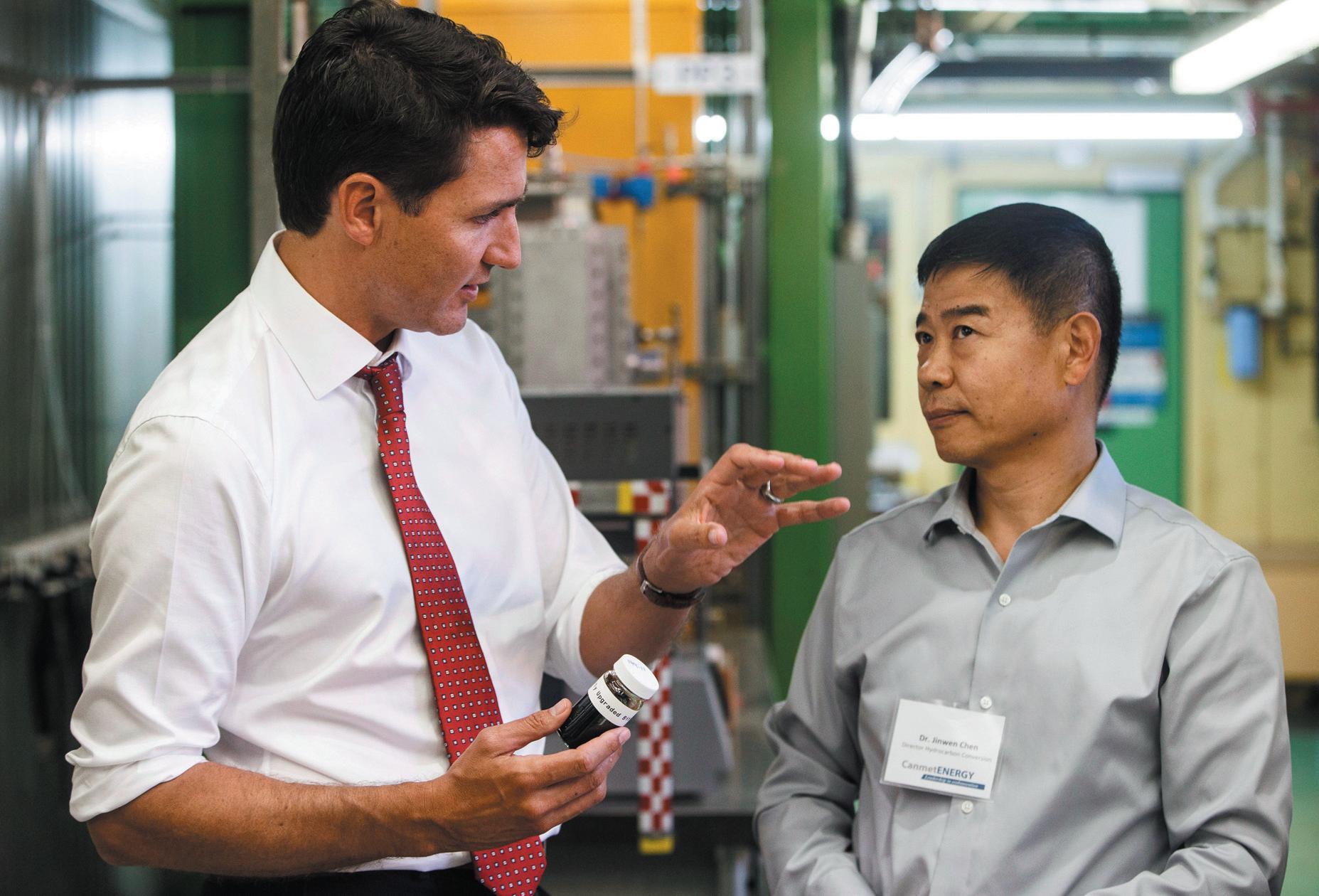
VANCOUVER — The City of Vancouver says the number of short-term rentals listed online has dropped by almost half since new rules came into effect requiring operators to have a business licence.
The city says there are 3,742 active listings on sites like Airbnb, compared with about 6,600 in April, when the regulations were announced.
As of Sept. 1, operators must have a business licence, which costs $49 annu-
ally, and must include the licence number in their listing. Operators can only advertise their main residence and must have permission from their landlord or condo board, or face fines up to $1,000 per offence on each platform where the rental is advertised – a shift from the initial fine announcement of up to $1,000 per day. The city says it has one of the highest initial compliance rates by any major city, with 2,640 shortterm licences issued, representing about 70 per cent of existing listings.
Dean BENNETT Citizen news service
EDMONTON — Prime Minister Justin Trudeau is pouring cold water on Alberta’s suggestion that the federal government use legislation or a court appeal to get construction started quickly on the Trans Mountain pipeline expansion.
In an interview on Edmonton radio station CHED, Trudeau says using “tricks” such as a new law or the Constitution’s notwithstanding clause would create further legal fights down the road.
“Using a legislative trick might be satisfying in the short term, but it would set up fights and uncertainty for investors over the coming years on any other project, because you can’t have a government keep invoking those sorts of things on every given project,” he told the radio station Wednesday.
“People want to know that we are doing things the right way for the long term – that jobs that get started will continue and won’t get stopped by the courts. That’s the change we are focused on making.”
The Federal Court of Appeal last week reversed a cabinet decision to allow Trans Mountain construction to go ahead.
The court found not enough consultation was done with Indigenous people and said the impact of increased tanker traffic was not properly considered.
The prime minister was in Edmonton on Wednesday and met in the afternoon to discuss the pipeline with Premier Rachel Notley, who has pulled her government from the national climate plan until there’s a fix.
“We know Albertans were disappointed, as were many Canadians, with the (court) decision,” said Trudeau before the meeting at a downtown hotel, with Notley beside him. “It was a hard blow to a province that has come through a difficult time and was beginning to see a brighter path forward.”
Notley said she hoped to discuss options with Trudeau.
“The Federal Court of Appeal decision, in and of itself, is probably not going to get us there, and so we have to look to other solutions,” said Notley.
Notley said she wants a “timely solution that restores the beginnings of investor confidence that we were pleased to start seeing in Alberta.”
Speaking at an event west of Edmonton earlier in the day, Notley said timing is everything.
“We have people who are wondering whether they should be going to work in the next week or two,” she said. “We have investors in the energy industry, as well as the economy overall, who are looking at whether Canada can make things work.”
Notley said she agrees there has to be proper consultation with Indigenous people, but added the federal government must also address concerns about the National Energy Board.
“We cannot be held hostage to a regulatory merry-go-round that never ends.”
Trudeau downplayed the idea of appealing the decision in the radio interview.
“The court was very clear: You need to do more on the environment. You need to do more on consultations, if anything is going to happen, so that’s what we are going to do,” he said.
But at an event later Wednesday morning Trudeau said an appeal is one of many options under consideration.
“We are looking at what an appeal would look like, what it would mean,” he said.
The project would triple the bitumen-carrying capacity of the existing pipeline from the Edmonton area to Metro Vancouver.
Notley has said the expansion is necessary to get more Alberta oil to the coast for shipment to overseas markets.
The line has faced stiff opposition from some Indigenous groups, environmentalists and the British Columbia government.
Earlier this year, the federal government announced that it was buying the pipeline after owner Kinder Morgan balked at starting construction, and, minutes after the court ruling was released on Thursday, company shareholders approved the sale for $4.5 billion.
Trudeau said the project would be dead had Ottawa not stepped in. He said the government’s goal is not to make money but to see the expansion completed.
“Our process and our focus is on getting that pipeline built the right way so we can finally get our resources to markets other than the United States.”
— With files from Colette Derworiz
Mike BLANCHFIELD Citizen news service
WASHINGTON — U.S. President Donald Trump and Justin Trudeau raised their trade brinkmanship to a new level Wednesday with each saying they were willing to walk away from the North American Free Trade Agreement if they don’t get what they want.
Trudeau started the day by branding Trump a rule breaker to argue in favour of keeping a mechanism to resolve trade disputes, while Trump hours later said Canada had more to lose than the United States if the two countries can’t make a deal to preserve the three country NAFTA.
“That’s going to be fine for our country,” Trump said. “It won’t be fine for Canada.”
The bombast of the two leaders contrasted with the insistence of negotiators that the mood inside the room was constructive as talks hit what is being described as an intense phase.
Foreign Affairs Minister Chrystia Freeland went out of her way to praise her counterpart, U.S. trade czar Robert Lighthizer, saying he was acting with “good faith” and “good will.”
“The atmosphere continues to be productive and constructive,” she said Wednesday evening, adding that both countries’ officials would continue negotiating late into the night.
“We are making good progress. We continue to get a deeper and deeper understanding of the concerns on both sides.”
Negotiations, now in their 13th month, are key to determining the economic and trade relationship among the three North American countries, with many workers’ and industries’ prospects hanging in the balance.
At the same time, Trump needs a win on trade ahead of the U.S. midterm elections in November that will test the president’s
ability to keep control of Congress.
“We’re not going to accept that we should have to sign a bad deal just because the president wants that,” Trudeau told Edmonton radio station CHED.
Trudeau offered some of his sharpest criticism of the unpredictable American president, saying that Canada won’t give an inch to Trump’s desire to scrap NAFTA’s Chapter 19 dispute resolution panels. The chapter allows countries to have their differences settled by independent arbiters –something Trump views as an infringement of U.S. sovereignty.
“We need to keep the Chapter 19 dispute resolution because that ensures that the rules are actually followed. And we know we have a president who doesn’t always follow the rules as they’re laid out,” Trudeau said.
Freeland, when asked about the comments, said she didn’t want to negotiate in public, but added: “I agree with the prime minister in public all of the time, and in private 99.99 per cent of the time... He made some important comments.”
The U.S. and Mexico reached a side deal last month, leaving Canada to negotiate separately with the U.S.
Trump hinted there might be progress towards a deal with Canada.
“I think we’ve come a long way toward them treating us fairly,” Trump said.
But other issues have yet to be worked out, including Canada’s cultural exemption in NAFTA. Sources familiar with the Canadian bargaining position say the cultural exemption Canada has insisted on preserving since NAFTA talks reopened remains an 11th-hour sticking point.
Part of the disagreement on culture revolves around Canada’s decision to allow the broadcast of glitzy American Super Bowl commercials, a decision that irks Lighthizer.


Canadian teen soccer star Alphonso Davies is among the athletes featured in a new Nike campaign featuring Colin Kaepernick that’s drawing attention worldwide.
A two-minute commercial released online Wednesday has the former NFL quarterback speaking about athletes overcoming adversity to achieve greatness.
The ad includes footage of Davies scoring a goal for Canada’s men’s soccer team as Kaepernick says “if you’re born a refugee, don’t let it stop you from playing soccer for the national team at age 16.”
The Vancouver Whitecaps midfielder was born in a refugee camp in Ghana after his parents fled the Liberian civil war, and the family immigrated to Canada when he was five. Kaepernick became a lightning rod by kneeling during the U.S. national anthem as a protest against racial injustice and police brutality. Now out of football, the former San Francisco 49ers quarterback is pursuing a collusion grievance against the NFL.
The ads feature Nike’s trademark ‘Just Do It’ slogan alongside the quarterback’s face and the words “Believe in something. Even if it means sacrificing everything.”
Basketball star LeBron James and tennis great Serena Williams are two of the most famous athletes featured.
Marathoner Eliud Kipchoge of Kenya, who attempted to break two hours in the marathon in a Nike project before missing by 25 seconds, and one-handed Seattle Seahawks linebacker Shaquem Griffin also are included.
Davies was first called up to play for Canada in July 2017, shortly after he received his Canadian citizenship. He’s part of the national squad that will compete in a CONCACAF Nations League qualifier on Sunday against the U.S. Virgin Islands in Bradenton, Fla.
The 17-year-old made headlines around the globe this summer when he was transferred to German soccer giant Bayern Munich for a record-setting $22 million. Davies will join the German team after the MLS season concludes.
Kaepernick narrates the full spot but first physically appears midway through. As a camera pans to reveal Kaepernick’s face, a reflection of a United States flag is visible on the facade of a building behind him.
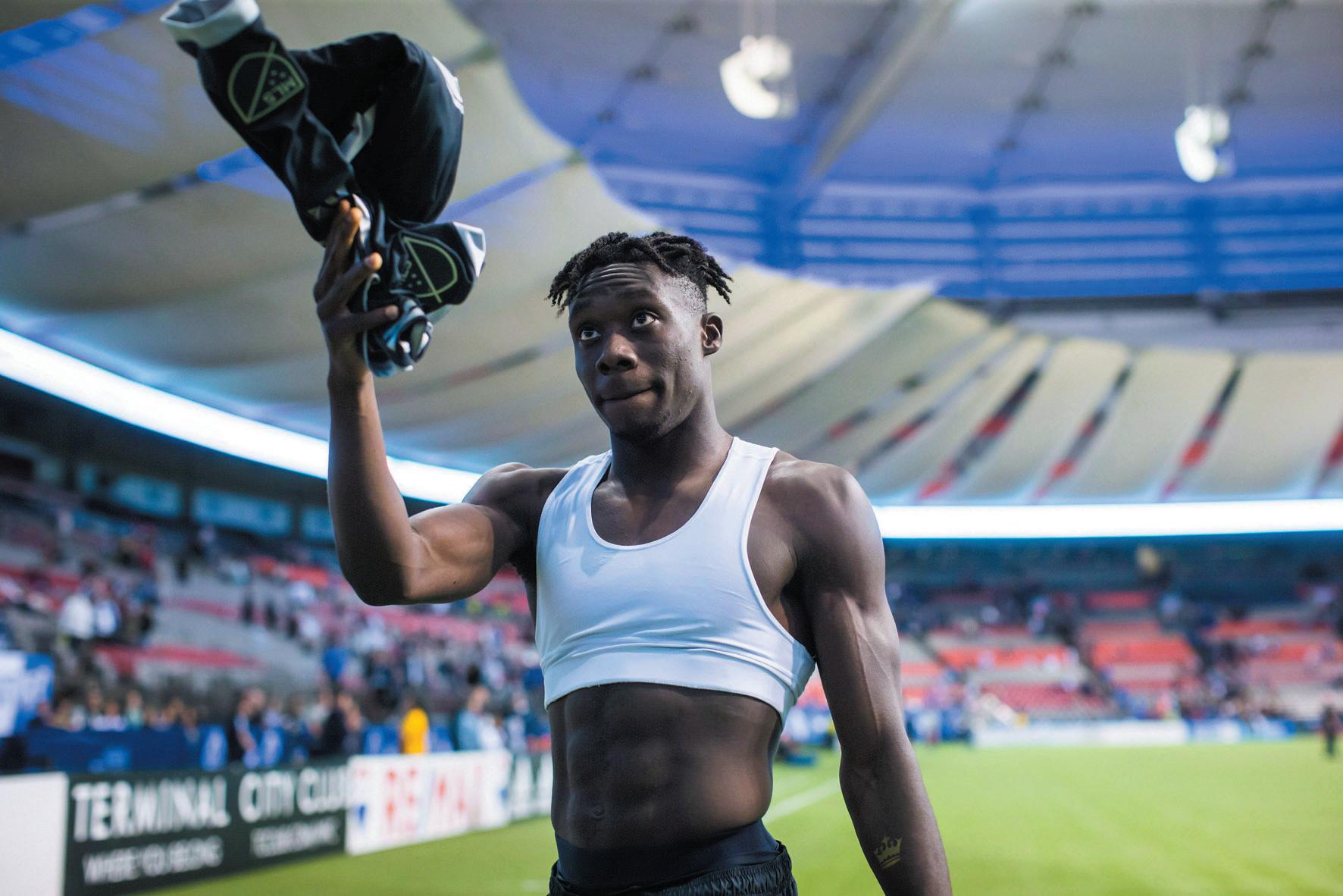
Vancouver Whitecaps’ Alphonso Davies walks towards spectators to give his jersey to a fan after defeating the San Jose Earthquakes 2-1 during an MLS soccer match in Vancouver on Sept. 1.
Kaepernick says: “Believe in something, even if it means sacrificing everything.”
At the start of the ad, Kaepernick says: “If people say your dreams are crazy, if they laugh at what you think you can do, good. Stay that way, because what nonbelievers fail to understand is that calling a dream crazy is not an insult, it’s a compliment.”
The former 49ers quarterback is revealed as the narrator toward the end of the spot.
The commercial’s universal theme is about athletes pushing for bigger dreams. It features young athletes who compete amid various challenges, touching on issues of gender, disabilities and weight loss, among others.
Kaepernick says at the end: “Don’t ask if your dreams are crazy. Ask if they are crazy enough.”
The spot is expected to air during college football and MLB games, and stream on various music, gaming and other platforms, Nike spokeswoman Sandra Carreon-John said.
Kaepernick hasn’t spoken to the media publicly since opting out of his contract with San
Francisco and becoming a free agent in 2017. He scored a legal victory last week in his grievance against the NFL and its 32 teams when an arbitrator allowed his case to continue to trial. The quarterback claims NFL team owners conspired to keep him out of the league because of his protests. His case hinges on whether owners worked together rather than decided individually to not sign Kaepernick.
A similar grievance is still pending by former San Francisco teammate Eric Reid, a Pro Bowl safety who joined in the protests.
Kaepernick already had a deal with Nike that was set to expire, but it was renegotiated into a multiyear agreement to make him one of the faces of Nike’s 30th anniversary “Just Do It” campaign, according to a person familiar with the situation who spoke on condition of anonymity because details of the detail had not been revealed publicly.
Nike also will create an apparel line for Kaepernick, including a signature shoe, and contribute to his Know Your Rights charity, the person said.
After a pleasant dinner date a few years ago, my wife and I picked up some ice cream treats and decided to park and eat them slowly, so we wouldn’t have to share them with the kids. We had barely got started when a car drove by and hit a rock on the edge of its rear tire at just the right angle, launching it in to the back window of our Suburban. The $300 window smashed in to thousands of tiny shards of glass. On an even more sober note, personal incapacitation is more than a mood wrecker. It may sneak up on us like an errant stone to the back of the car, or it may seep into our sentience with the subtlety of a latent cancer. I’m not sure which I would prefer. If I fall victim to an accident or to a sudden crippling disease, the descent is mercifully quick, but the wiggle room for last-minute preparation is nil. And who’s going to know where I hid the Apple TV remote?
If, on the other hand, I slip into dementia slowly, the likelihood of that terrible in-and-out-of-clarity thing grows.
One day I might feel sharp, or for weeks on end, but if I am like so many others, the mind decay is likely to be bumpy – with good days and bad. How do you get me to agree to let others make my decisions for me if I am somewhat clued-in about half of the time?
And worse, during one of my down days, my Don Cherry bobble head is likely to find its way to the garbage. Speaking of which… “Hey honey! Where is that thing?”

It’s happening already. Next she’s going to pull down that lovely BRIC-share wallpaper in the den.
What about being appointed as attorney for someone else?
Typically we might choose a peer of a similar vintage, which could be trouble if we both slip away into gazing at re-runs of Jeopardy at around the same time. The following list of duties might help us more soberly consider both the giving and the receiving of such an assignment.
It’s an honour to be considered as an attorney and be trusted with the important duties therewith. The following list, while not exhaustive, confirms the weightiness of the task.
The extent to which these duties should be performed by the attorney will depend on the health and circumstances of the donor and, as such, not all may be applicable.
1. Locate and review the donor’s will and document any specific instructions concerning property and bequests.
2. Notify all banks, brokers and financial institutions with whom the donor has business that you are acting as the donor’s attorney; confirm whether the donor created any other Power of Attorney documents with them and redirect statements if necessary.
3. Cancel debit card(s).
4. Cancel credit card(s) and return cards to issuers.
5. Check Bank of Canada website for unclaimed balances in donor’s name.
6. Locate and document all original investment certificates, stocks, bonds, property deeds, etc.
7. Notify appropriate institutions and redirect annuities, pensions and registered funds.
8. Review the suitability of the investment portfolio and any surplus cash, making any necessary and allowable adjustments to meet cash requirements.
9. Identify and document all other personal assets.
10. Notify Canada Revenue Agency, provide them with a copy of the Power of Attorney document and request a statement of account showing all outstanding taxes, refunds and installments paid to the current date
11. File any outstanding and ongoing tax returns and pay all income taxes owing.
12. Notify the appropriate authorities and redirect CPP/ QPP, OAS, Veteran’s Pension Payments and GST/HST credits.
13. Notify insurance companies or other institutions regarding auto, home, disability or life insurance that you are acting as the donor’s attorney and redirect statements if necessary.
14. Ensure adequate insurance for assets and upkeep of property.
15. Set up disability insurance payments, if required.
16. Cancel auto registration and insurance, if applicable, and collect any refunds.
17. Investigate and record all debts owed by the donor.
18. Arrange payment of debts with any surplus cash and obtain receipts.
19. Create a complete list of the

donor’s assets and liabilities as of the date of your first action.
20. Establish an ongoing list of acquisitions and dispositions made on the donor’s behalf (i.e. money received, investments made, liabilities incurred or discharged).
21. Create a monthly budget consisting of all expected income and payments required to ensure the donor’s immediate and ongoing financial needs can be met.
22. Document (including assets used in calculation) any compensation taken for your attorney duties.
23. Consult with the person acting as attorney for health care (person named in a “Representation Agreement”) regarding health care, safety and shelter for the donor; obtain a written description of decisions made and make all necessary financial arrangements.
24. If there is no Representation Agreement for health care, obtain legal advice regarding the donor’s current circumstances.
25. Notify personal attendants, housekeepers, gardeners and other staff of your role as attorney, as advise as required.
26. Initiate sale of assets if required.
27. Cancel memberships and other subscriptions if required. Mark Ryan is an investment advisor with RBC Dominion Securities Inc. (Member–Canadian Investor Protection Fund), and these are his views, and not those of RBC Dominion Securities. This article is for information purposes only. Please consult with a professional advisor before taking any action based on information in this article. Mark can be reached at mark.ryan@rbc.com.
“Many a small thing has been made large by the right kind of advertising.”

Toronto’s
a resumption of
The political issue of trade again took centre stage, said Allan Small, senior investment adviser with HollisWealth.
“A lot is hanging on these talks and what they can accomplish and I think the market right now is basically taking a wait-and-see approach,” he said.
While consumer spending remains strong, corporations are waiting for a decision on NAFTA before making spending decisions, Small added.
The S&P/TSX composite index was down 23.73 points to 16,137.57, after reaching a low of 16,032.96 on 219.6 million shares traded. That follows a 108.67-point decline on Friday and a 101.58 point drop on Tuesday.
About half of the sectors closed up, led by consumer staples and telecom services. Loblaw Companies Ltd. rose 4.57 per cent to $69.27 a day after the supermarket chain announced it will spin out its real estate investment trust to focus solely on its grocery and pharmacy business.
The information technology sector lost almost two per cent as Blackberry Ltd.’s stock fell more than six per cent to $13.15 after Facebook filed a patent infringement lawsuit in U.S. court.
The health-care sector had a down day as cannabis stocks lost some ground.
In New York, the Dow Jones industrial average was up 22.51 points to 25,974.99. The S&P 500 index was down 8.12 points to 2,888.60, while the Nasdaq composite was down 96.07 points at 7,995.17.
Stocks of some of the world’s largest tech names fell as their executives defended their companies in congressional hearings. Twitter’s CEO and Facebook’s No. 2 testified about ways they are trying to root out foreign interference ahead of the midterm elections.
The Canadian dollar closed down slightly to 75.84 cents US compared with an average of 75.86 cents US on Tuesday. The loonie barely budged after the Bank of Canada decided not to raise its interest rate but signalled another hike could come in October to keep inflation in check. The October crude contract was down $1.15 at US$68.72 per barrel and the October natural gas contract was down 2.8 cents at US$2.80
Managing editor Neil Godbout puts the news in perspective every day, only in The Citizen


has had a stellar season of golf.
Ted CLARKE Citizen staff
tclarke@pgcitizen.ca
Natasha Kozlowski would love to be a younger version of Brooke Henderson, the burgeoning Canadian golf superstar, but there’s somebody else on the LPGA tour she prefers to emulate.
She’s a big fan of Suzann Pettersen, the sometimes potty-mouthed Norwegian who has been known to drop the odd F-bomb within range of the TV cameras after she makes a bad shot.
“She swears and I swear a lot. I have a foul mouth – I like to verbally express my emotions,” said Kozlowski, 17, who has had a breakout season on the provincial junior scene, including a win a few weeks ago on her home course at the Ladies Simon Fraser Open.
“I’ve said some things in front of rules officials before and they just turn a blind eye to it. They’re fine. If I hit a bad shot I don’t hold on to it, I just let it go – whatever works.” Kozlowski didn’t have much to cuss about Aug. 13 at the Prince George Golf and Curling Club. She came back from being four strokes down to defending champion Lindsay MacDermott after the first round to win by seven strokes. Kozlowski shot 74-73
for a two-round total of 147, while MacDermott, a Kamloops golf pro, went 70-84-154 and finished second.
“She had a really good round on the first day and probably nerves got to her on the second day,” said Kozlowski. “I just kind of stayed consistent, stayed out of my head and put in a pretty good round.”
On her shot off the tee in the second round on the par 5 first hole, Kozlowski left her drive 165 yards from the pin and her approach shot stopped eight feet from the hole. She missed the eagle attempt but sunk the birdie and that set her up for another solid round.
Her clubhouse celebration came one day before her 17th birthday and she’s one of the youngest champions in the 51-year history of the tournament. Donna Bell of Prince George won her first of back-to-back Simon Fraser Open titles in 2001 when she was 20.
Kozlowski was the runner-up to MacDermott in 2017, finishing five strokes back. In this year’s Junior Simon Fraser Open, held in June, Kozlowski ended up second to Cody Bailey.
That felt pretty good – that was the big one. That was the tournament I played best in all year.
— Natasha Kozlowski on her victory in the Ladies Simon Fraser Open
Kozlowski grew up around the PGGCC and started playing when she was seven. Her older brother Roman used to play tournament golf and her parents, Val and Duane, remain avid golfers and PGGCC members. Ever since Kozlowski started playing in tournaments at age 11 she’s wanted to win the Simon Fraser title.
“That felt pretty good – that was the big one. That was the tournament I played best in all year,” said Kozlowski, who works in the pro shop at the PGGCC and plays the course three or four times a week.
A week after her Ladies Simon Fraser triumph, Kozlowski went to Gallagher’s Canyon Golf Club in Kelowna and finished in a tie for ninth at the B.C. juvenile girls championship. She got off to a tough start, climbing to six-over on the first four holes on her way to an 11-over opening-round 84, but shot 79-80 in the next two rounds to finish 17 strokes behind champion Akari Hayashi of Victoria.
“The first day I couldn’t get anything together – the first four were bad and then I was OK,” she said. “I play so many events I usually can control my nerves pretty good, but I didn’t like the golf course at all. It didn’t set up for me and I started
Ted CLARKE Citizen staff
The pros are calling Prince George Cougars defenceman Joel Lakusta and winger Jackson Leppard.
They both left Prince George Wednesday bound for their respective NHL rookie camps.
Lakusta has been invited to play for the St. Louis Blues in Traverse City, Mich. The eight-team tournament starts Friday and runs through next Thursday.
The Blues, Detroit Red Wings, Chicago Blackhawks, Columbus
Blue Jackets, Carolina Hurricanes, Minnesota Wild, Dallas Stars and New York Rangers are involved.
Former Cougar defenceman Dennis Cholowski will be there with the Red Wings.
The 20-year-old Lakusta, a fourth-year Cougar from Sherwood Park, Alta., attended the Calgary Flames development camp in July and is hoping to make a big enough impression with the Blues to turn pro this year. He turned in his best season last year with the Cougars, collecting nine goals, 33 assists and 42
points in 70 games.
Leppard, 19, will join the Tampa Bay Lightning as part of the 2018 Prospects Showcase in Estero, Fla. The four-day tournament starts Saturday and includes the Nashville Predators and Washington Capitals.
Leppard, a native of Vancouver, was part of the Lightning development camp in June. He’s heading into his third WHL season with the Cougars, coming off a 2017-18 season in which he scored 17 goals and 23 assists for 40 points in 68 games.
on the back nine too, which I didn’t like. I don’t think anyone played well on that golf course. The scores were high for that kind of calibre of a tournament.
“Overall I’m happy with it.”
Kozlowski has had her share of success this summer and on July 24 she won the Maple Leaf Junior Golf Tour event at Predator Ridge Resort, near Vernon. She captured the Hoselton Trophy by three strokes, shooting 74-87-161.
Now enrolled in Grade 12 classes at College Heights Secondary School, Kozlowski is starting to attract interest from university golf team recruiters. She loves the idea of leaving the snowy winters behind in Prince George and playing golf year-round somewhere on the West Coast while studying kinesiology.
“I don’t want to stay here, I want to go far away and play in college,” she said. Golf is not her only game. Kozlowski is a former club volleyball player who plays for the College Heights senior team. She missed the tryouts last weekend while suffering through having her wisdom teeth pulled but the five-foot-seven high school veteran has a spot on Jason Olexyn’s team at middle blocker.
She has one more golfing road trip ahead of her this season at the Maple Leaf Tour National Team Challenge in Niagara-onthe-Lake, Ont. Kozlowski is part of the two-female, four-male Team West for the three-round event, Sept. 21-23.
Coming off a 4-2 preseason win against the Kelowna Rockets Saturday in Kelowna, the Cougars have cut their roster down to 27 players (three goalies, eight defencemen and 16 forwards), having released nine players, including forwards Chance Adrian and Matt Mosher, who were with the team as rookies last season. The Cats will be in Langley for a pair of exhibition games. They’ll play the Vancouver Giants Saturday at 7 p.m. and return to the rink Sunday at noon to play the Victoria Royals.

Donna SPENCER Citizen news service
CALGARY — Training camp has been turned upside down for the Calgary Flames because of an upcoming trip to China.
The Flames depart Sept. 11 for preseason games against the Boston Bruins in Shenzhen and Beijing.
So over a week before other NHL players reported for physicals with their respective teams, the Flames were given the “voluntary option” to do testing Wednesday.
The veterans opted to empty their gas tanks a day before Flames rookies reported to do the same, instead of waiting until departure day.
“It definitely is optional and I think there was another day set up, but it’s so close, or on the day we were travelling, that for us as players we wanted to get in here early,” Calgary captain Mark Giordano said.
“We have a long flight to China and it will be good for us to be able to recover before we get on that plane and travel for all those hours.”
The Flames play pre-season games Sept. 15 in Shenzhen and Sept. 19 in Beijing.
Calgary will ice a split squad Sept. 19 with teams playing in both Beijing and Vancouver. Six more pre-season games follow over a nine-day span.
Calgary opens the regular sea-

son Oct. 3 in Vancouver.
The Flames have a new head coach in Bill Peters and acquired high-profile players in the offseason.
Winger James Neal and centre/ winger Derek Ryan came via free agency.
Calgary moved defenceman Dougie Hamilton and right-winger Micheal Ferland to the Carolina Hurricanes at the June draft to get forward Elias Lindholm and
defenceman Noah Hanifin.
Several Flames thought the China trip could accelerate the process of developing much-needed chemistry.
“We’ll be spending more time with each other than at a normal camp, where it’s two to four hours at the rink and you go home,” centre Mikael Backlund pointed out.
“Here, you’ll hang out with the guys for eight days straight. I definitely believe that will help
this group.”
The China games will begin to answer some questions for the Flames, not the least of which is who will play on the right side of centre Sean Monahan and leftwinger Johnny Gaudreau with the departure of Ferland.
“Some of the names we brought in, skilled smart players I think will fit real well with me and Monny,” Gaudreau said.
“That’s what’s going to be great
about China, going over there and building some chemistry with whoever you’re playing with and try to get off to a good start to the season.”
Neal, who signed a five-year,
US$28.75-million deal with the Flames, is the prime candidate to start on the top line with Gaudreau and Monahan.
“Them both being left shots works out great, then you’re passing leftie to leftie,” Neal said. “Things opens up quick and I love having a left-handed centreman.
“I look forward to getting a chance to play with them. They’re guys that can shoot the puck, but they’re great passers.”
The NHL arranged pre-season games in China for the first time in 2017, when the Vancouver Canucks and Los Angeles Kings squared off in Shanghai and Beijing. How much that travel impacts a team’s reserves at season’s end is a matter of debate.
The Canucks finished out of the post-season at 31-40-11, while the Kings (45-29-8) were swept in the first round of playoffs by the Vegas Golden Knights.
“That thought hadn’t even crossed my mind,” Backlund said. “We’ll find a way to keep the energy at the same level as normal.
“It’s a little stressful, all the flying and the time change. We have a lot of good people around us to prepare us. They’ve set out on paper how we should eat and sleep and all that. I don’t think it will be a disadvantage for us.”
from page 9
Prince George made it to the league final for the first time in franchise history, dropping a five-game series to the Wenatchee Wild.
The Kings expect a big crowd at Rolling Mix Concrete Arena to start the new season and will raise their first BCHL banners as defending Mainland Division regular season and playoff champions and as Coastal Conference playoff champions.
“It’s huge for the organization and the guys are excited about it, too,” said Poisson, who centres the Kings’ top line with Brar and right winger Nolan Welsh.
“Obviously playing in front of a big crowd is big, especially against the team we had in the first round of playoffs. They’ll probably want to get back at us and they ended up winning the RBC so that’s kind of a chip on our shoulder why we want to get back at them.
“People know how good we
did last year and know we have a chance to win everything this year and no one’s going to take a step back, we’re always going to be going forward this year. I guess winning against us is a bigger thing just because of how well we did last year. Teams will be gunning for us but we’ll take that challenge and we’re excited to play.” A fourth banner will commemorate the Humboldt Broncos players and staff who died as a result
of their bus accident on April 6. All 133 teams in the Canadian Junior Hockey League this season will fly that banner, designed by Tyler Hutchinson of Moose Jaw, Sask.
Each junior A player in Canada will wear a Broncos sticker on his helmet.
The pre-game festivities will also include a tribute to former equipment manager Malcolm Poburan, who died in April of lung cancer.
The Kings and Chiefs will also meet on Saturday night at RMCA.
Gemma KARSTENS-SMITH
Citizen news service
SURREY — Chris Rainey’s status with the B.C. Lions this week remains questionable and the running back/returner is frustrated with the decision.
Head coach Wally Buono said the roster for Friday’s matchup with the Ottawa Redblacks isn’t set, but coaches and management are weighing their options.
“We have to look at the ways we can get the most out of our players,” he said after practice on
Wednesday. “At this point, we believe wholeheartedly that we can get more out of our return game.”
Rainey is healthy, but did not work with the offence for the first two days of practice this week. He was at training on Wednesday, where Buono said he was “attentive and working hard.”
Any time a player is benched, there’s a reason for it, the coach said. “Do I expect (Rainey) to be happy? No. Would I like him to be unhappy? Yes,” he said.
Rainey leads the CFL in allpurpose yards, putting up 1,525 so far this year. He tallied 494

receiving yards and 226 rushing yards for the Leos last season and was named to the league’s all-star team in 2016.
The 30-year-old said he was “furious mad” when he heard that
he might not play this week.
“I was so mad, I could have flipped a car over,” he said.
The Florida native added that he’s since calmed down and is focusing on being a team player.
“It’s out of my control so, hey, I’ll just go with it,” he said.
This is Rainey’s fourth season with the Lions, following a season with the Montreal Alouettes, and stints with the NFL’s Pittsburgh Steelers and Indianapolis Colts.
He signed a contract extension in December but will be a free agent at the end of the year.
Rainey said he hasn’t talked to
and RHP Glenn Sparkman from Omaha (PCL). Announced a player development contract extension with Wilmington (Carolina) through the 2020 season. LOS ANGELES ANGELS - Recalled RHP Deck McGuire from Salt Lake (PCL). OAKLAND ATHLETICS - Assigned LHP Danny Coulombe outright to Nashville (PCL). SEATTLE MARINERS - Assigned RHP Rob Whalen outright to Tacoma (PCL). TORONTO BLUE JAYS - Placed RHP Joe Biagini on the 10-day DL. Designated RHP Mike Hauschild for assignment. Selected the contract of OF Jonathan Davis from Buffalo (IL). Recalled RHP Jake Petricka, OF Dwight Smith Jr., 1B Rowdy Tellez and SS Richard Urena from Buffalo. NATIONAL LEAGUE ARIZONA DIAMONDBACKS - Placed RHP Zack Godley on paternity leave. Recalled RHP Matt Andriese from Visalia (Cal) and SS Ildemaro Vargas from Reno (PCL). ATLANTA BRAVES - Sent RHPs Arodys Vizcaino and RHP Jose Ramirez to Rome (SAL) for
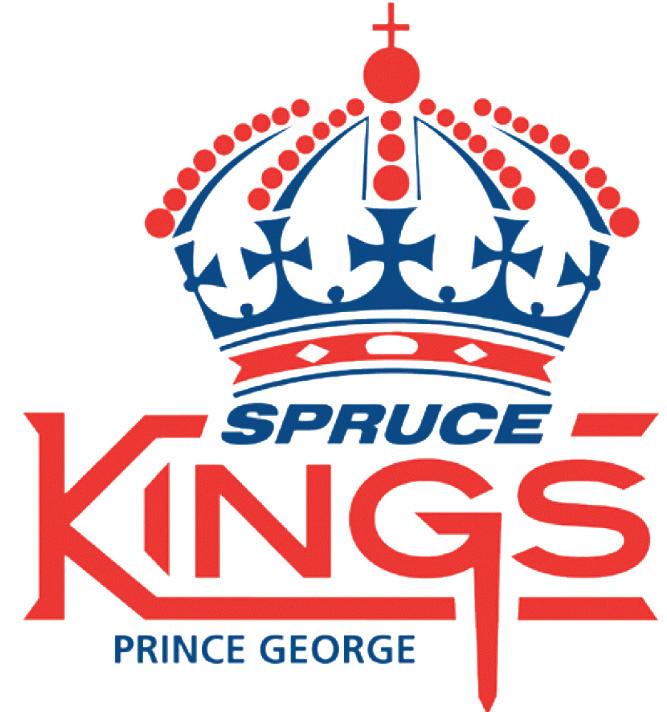
his agent this week about finding another place to play, but admits he was tempted.
B.C. is looking for a win to turn around a lacklustre season that saw the team go 3-6 in the first half. The team’s ready for the challenge, Rainey said.
“They look great this week. I just wish we looked like this at practice throughout the nine weeks. But, hey, it’s a new half of the season,” he said. “We just got to take advantage of it.” The Lions are last in the CFL West. The Redblacks lead the CFL East at 6-4.
Just after Prince’s death in 2016, even before he’d had a chance to mourn, Questlove began to get pelted with the questions. How long before the drummer, writer and musical missionary dug into the great one’s bottomless archives and prepared them for the public?
Ahmir “Questlove” Thompson, known for helping lead The Roots on and off The Tonight Show Starring Jimmy Fallon, wasn’t interested. Or, more accurately, he was too interested.
He loved Prince, from the moment he picked up 1999 as an 11-year-old to the time he roller-skated with his musical hero.
“I still want to be the fan that is surprised and elated,” he says in a phone interview.
“Like when they released that ‘Purple Rain’ deluxe set, there were about four or five songs I had never heard before. I was a kid again. I was 12 years old and still discovering Prince and being surprised. That’s the experience I wanted with Prince.”
For now, Questlove has signed on for what he hopes will be the start of a special celebration of Prince’s work. The late artist’s estate hired him to lead 4U: A Symphonic Celebration of Prince, a tour that opens Thursday and includes arranger Brent Fischer.
Questlove spoke about what fans can expect at these concerts, which will feature as many as 50 players but nobody on the microphone.
Q: We know Prince didn’t have a will, and we also live in a world where Ronnie James Dio’s hologram has been heading out on tour. Do you think about what Prince would want?
A: Orchestral music has been a major part of his music for the last 30 years. So this is actually a natural step. I think something

like this would have happened even if he were still alive.
Prince has done ballet presentation and things of this nature, back in 1994, 1995. He did like two or three orchestral readings of his songs to ballet. So while we’re without the ballet dancers and stuff, this is pretty much in the vein of projects Prince has worked on before. Which is basically Prince’s musical creations without Prince being there.
Q: You came into this basically as a curator. Can you tell us about the set list?
A: Prince is really a cult artist that has A-list artist status. But at the end of the day, he’s a cult artist. There are people that are just surface fans that really just know Purple Rain and maybe have just seen the movie. I have friends who know Prince’s Kiss from Julia Roberts singing it in Pretty Woman. Then, on the other side of the coin, you have Prince fans who have everything but
his DNA. Every B-side, every bootleg, every rehearsal. Those types of fans.
Q: So how do you decide, well, we’ve got to do When Doves Cry, but I can do something amazing with Something in the Water (Does Not Compute).
A: It’s funny you said Something in the Water (Does Not Compute), because that’s technically the third song. Part of the challenge was this was a guy with literally... one of the main reveals that we found out is that he really wasn’t exaggerating when he stated that he had songs in the thousands inside the vault. Even as a super fan that I am, and I have access to stuff that the average Prince fanatic never had privy to or knowledge of, and I’m just finding out now that I maybe know maybe 20 per cent of his output. I thought I was closer to 90 per cent.
Q: How do you balance it?
A: I’m on a scale between Captain Obvious songs – When Doves Cry and Little Red
Citizen news service
ABC officially has a new star of The Bachelor. And quite a few viewers aren’t pleased.
The network announced Tuesday morning that Colton Underwood – the 26-year-old former football player and third runner-up on last season of The Bachelorette – will become the next Bachelor, one of the most highly-coveted positions on reality television. This comes on the heels of his exit from spinoff Bachelor in Paradise on Monday night, when he ended his fling with contestant Tia Booth.
“It was his good looks, love for dogs and vulnerability that charmed not only Bachelorette Becca Kufrin, but all of Bachelor Nation,” ABC said in a news release. “After a summer of growth and a new perspective on what he is looking for, Colton is more than ready for this next chapter.”
Also, as Colton has discussed on the show multiple times, he is a virgin. For ABC, this is a big win. In 2013, Sean Lowe was nicknamed the “Virgin Bachelor” after the tabloids reported he was a “born again virgin,” although the show itself avoided the topic. So can you imagine how excited the producers are for a Bachelor star who will actually talk about it?
(“That’s one thing that I took pride in on both seasons, is just being true to where I am,” Colton told Michael Strahan on Good Morning America Tuesday.) The potential storylines are endless.
ABC executive Robert Mills made the Sean comparison in a recent E! interview, saying that Colton “certainly has a lot of the attributes that you love in a Bachelor. There’s a little bit of that Sean Lowe... he’s also a guy who is surprisingly funny and charismatic. Colton could be a very interesting Bachelor.” Unfortunately, plenty of viewers feel otherwise. Last week, blogger Reality Steve leaked the news early. “I’m hearing that they will be announcing the next Bachelor soon and it will be Colton,” he tweeted. “My thoughts are Sean Lowe has been their only successful Bachelor. They must feel

Colton is the closest thing they’ll get to Sean. Character, morals, no shady past, etc. Sean 2.0. Here we go. Let the freaking out begin.”
Sure enough, the responses poured in, and they were uniformly negative. The most common reaction was that while Colton may be a nice guy, he’s extremely boring – a deadly ingredient in any reality show. Many clamored for a more charming, interesting and mature choice, such as his fellow runners-up Blake Horstmann, Jason Tartick or Wills Reid. Or even fan favorite Joe Amabile, known as Grocery Store Joe.
Others scoffed about how Colton bounced from The Bachelorette (where he appeared heartbroken when Becca broke up with him) to Bachelor in Paradise (where he had an emotional on-and-off relationship with Tia) to The Bachelor with remarkable speed. Raven Gates, Tia’s best friend and former Bachelor contestant, appeared on Paradise to warn her pal that Colton may not be there for the right reasons – and that perhaps he was only interested in dating “It Girls.” (Before The Bachelor franchise, Colton dated Olympic gymnast Aly Raisman.)
Some felt that his casting cheapens the already questionable premise of the show. “Even if we’re being generous and calling
Colton’s brief time with Becca and Tia ‘relationships,’ we’re still dealing with an anxious, 26-year-old virgin whose dating history does not indicate he’s ready to put a ring on it,” wrote Entertainment Weekly TV critic Kristen Baldwin, a longtime Bachelor recapper.
“What about that says ‘perfect Bachelor material’ to anyone?”
Amid the outrage, creator Mike Fleiss issued a vague tweet over the weekend: “You all know what the Bible says about passing judgment on others ... It’s against it.
#TheBachelor.”
“1) the Bible has nothing to do with The Bachelor. 2) simply not wanting bachelor Colton isn’t a sin,” one fan tweeted in reply.
“3) maybe you should actually listen to who the fans want for once, we’re the reason the show’s still running & without us you’re done.”
However, with his new Bachelor gig official, Colton insisted that his former Bachelor relationships are in the past.
“Obviously you can tell how it was all so emotional for me,” Colton told People magazine. “But it was also good for me. I can’t say enough good things about Becca and enough good things about Tia. They’ve helped me grow and discover who I am and what I’m looking for in a wife.”
Corvette
– and obscure B-sides like Alexa de Paris.
Q: Tell us about the string arrangements. Not having heard the show, the first fear I always have when strings are added to existing songs is that they get cheesy somehow.
A: I approached the Clare Fischer estate to see if they’d be interested in arranging some of these songs. Even though Clare Fischer is no longer with us, his son Brent Fischer was a part of the orchestra and a part of the arranging. That was very key for me even being involved in the project. If Brent Fischer is fine with us using his father’s arrangements, this is a golden moment. Because for a lot of Prince fans, Clare Fischer is kind of like Billy Preston to the Beatles.
Q: Explain this to a non-musician. I hear a song like Something in the Water and wonder how it becomes a great orchestral arrangement.
A: So the way that I connect these songs, there’s an ebb and flow with keys, there’s an ebb and flow with tempo. So in this particular case, I will reveal to you that the first song of the set is Controversy. The bridge of Controversy is in E-flat minor. What song could I segue that is in E-flat minor? So I had choices. I could have used Computer Blue. I could have chosen Erotic City. I could have chosen Automatic. But for some reason there’s an arrangement of Something in the Water (Does Not Compute) that he started to do maybe a month before the Purple Rain album came out, so this is like June of 1984, and because it’s more fleshed out, more arranged, that’s what I went with. Even then when I’m choosing songs, I’m not thinking of just the album version. For a lot of his live arrangements, there’s a lot of references. Like the 1984 version of When Doves Cry is way different than the ‘86 version and the ‘87 version and the ‘92 version.







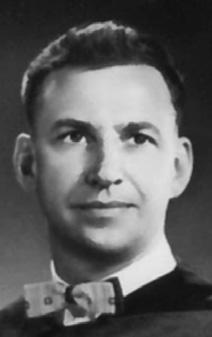


Dr Eldon Edward Lee
May 5, 1923 - September 3, 2018
What an Incredible Life!
Eldon Lee was born in Happy Valley, Chico, California to mother, Shirley and father, Edward Lee. At the age of 6 he moved to a ranch in the Cariboo, along with his brother Todd, his mother and her extended family. Years on the ranch during the depression were not easy. However, their strong faith in God carried them through.
From being home schooled to graduating Magna Cum Laude from Seattle Pacific College, he went on to pursue his medical degree at the University of Washington (1955), and completed a specialty in Obstetrics and Gynecology in Vancouver and Birmingham, England.
In 1962, Eldon became the first, and for many years the only, OB/GYN north of Kamloops. After delivering thousands of babies it is only fitting that he passed away in the wee hours of “Labour Day”. In recognition of his tremendous contributions to the medical community, he was installed as a life time member of the Canadian Medical Association in 1995 and inducted into the Northern Medical Hall of Fame in 2009.
On August 22, 1952 Eldon married the love of his life, Marjorie Cartmell in a ceremony performed by her father, Brigadier Arthur Cartmell. During their marriage they embarked on many adventures including international travel, family time at Lee Cottage on Cluculz Lake, Thanksgiving weekends at Squawk’s Lake, and family reunions in the Cariboo. Along the way, 6 children joined their adventures. After 66 years of marriage, Eldon and Marjorie still exemplified their love and respect for each other.
Eldon embraced many passions in life. He was a cowboy rancher, RCAF bomber pilot during WWII, hunter, author, Greek scholar, and Sunday school teacher. He enjoyed a variety of sports including being the star goalie of the PG Doctors hockey team back in the 60’s and 70’s. As Eldon got older he turned to more thrill-seeking adventures - an Ultra Light plane and then an ATV (his last quad ride was a couple of days before he went into the hospital). Eldon and Marjorie were steadfast in their faith in God and were longstanding active members of St Giles Presbyterian Church.
Eldon will be dearly missed by his wife, Marjorie; Children: Vickie (Art) Brown, Barbara (George) Cruwys, Peter (Christine), Stuart (Michelle); Grandchildren: Sarah, Laura, Ben, Elicia, Brianna, Erin, Amy, Mike, James, Jonah, Emersyn; Great Grandchildren: Taylor, Kayden, Evan, Mya, Olivia, Robert; as well as many extended family and friends, and his beloved dog Chryssie. Predeceased by mother Shirley, brother Todd, sons Gerry and Robert.
A Celebration of Life will be held on September 15, 2018 at 3:00 pm at St Giles Presbyterian Church, 1500 Edmonton Street. Reception to follow.
Thank you to Drs Dan York, Heather Smith, Mike Moran, Tim Olmstead and the nurses and support staff on 3 North for the excellent care and compassion you provided to Eldon. Eldon was a strong supporter of the UNBC Northern Medical Program should you be considering a donation in his memory.
GODSPEED!
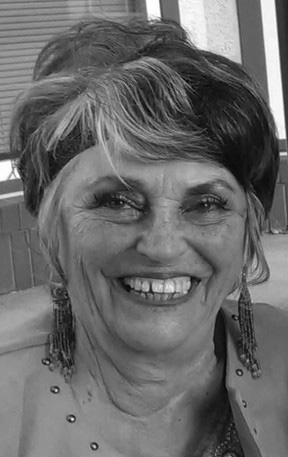
Beverly Ann Campkin (née Petersen) died peacefully in the presence of family on September 3, 2018. Beverly was born in Saskatchewan on August 9, 1938. She had an incomparable zest for life. Easy to spot in a crowd, her personality was even more colorful than her wardrobe. She could often be found going to concerts, performing in fashion shows, playing bridge, doing yoga, dancing and generally enjoying a vibrant social life. You may even remember her from your last visit to the hospital emergency room, where she was an auxiliary volunteer for over eight years. Beverly is remembered by her two sons, nephew and his family, three grandchildren, two great grandchildren, and an abundance of extended family members and friends. A memorial service will be held on Saturday, September 8 at 7pm at Prince George Funeral Service (1014 Douglas St). In lieu of flowers, please donate to the Prince George Senior Society or to the Prince George Rotary Hospice House.
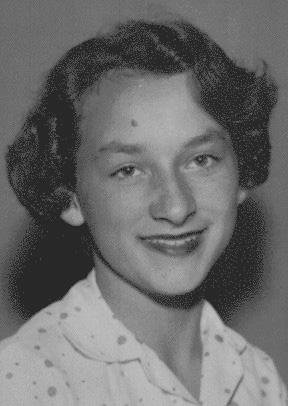

FOUCHER, Carmen Noëlla Grace (LeFebvre) born July 8th, 1944 in Edmonton, AB and passed peacefully at home on August 31st, 2018 with her children by her side. Carmen is survived by her daughter Bernadette Kipping, sons Daniel (Sandra Morris), Philip (Denise) & Michael (Trish Schiedel), grandchildren, Jared Kipping (Kelly Pratt), Kendra Kipping (Jeremy Goertzen), Marc Foucher (Sarah Rollins), Conrad Foucher (Erika Aspen), Celine Foucher, India and Amara SchiedelFoucher. Also survived by her siblings and in-laws Henri LeFebvre (Cecile), Dolores Baza, Alan Collie, Richard (Louise), Suzanne, Noel (Judi), Alain (Susan), Florent (Sandi) Foucher and Jeannine (Lance) Allard and many, many nieces, nephews, cousins, and close friends. Predeceased by husband Alain Foucher, parents Louis and Marie-Ange, baby brother Jean Paul, sister Patricia, brother Louis and sister-in-law Bernardine. Carmen retired from BC Hydro after 25 years and then became active with the Power Pioneers. She was a CWL member for 55 years and it played a major role in her spiritual and social life. Carmen was a devoted wife, mother, sister, grandmother and aunt. A visitation and prayer service will be held Friday, September 7th at 6:30 pm at St. Mary’s Catholic Church (1088 Gillett St.). Funeral Mass will follow Saturday, September 8th at 11:00 am. Please feel free to leave messages of condolences at carmenfoucher.weebly.com. In loving memory of Carmen, donations to the Prince George Community Foundation.
It is with great sadness that we announce the passing of Marion Buckland on Tuesday, August 7, at Royal Inland Hospital in Kamloops at the age of 75 years.
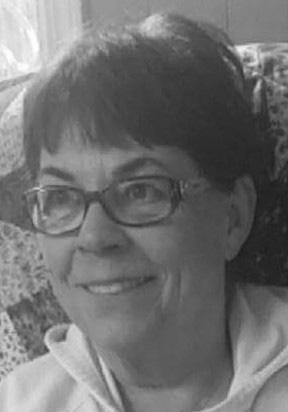
Marion is survived by her husband Myron, children Leona Janot, of Prince George and Leslie Janot of Kelowna. She is also survived by her siblings Sylvia, Carol, Karen and Danna as well as her four grandchildren and her two greatgrandchildren. Marion was predeceased by her parents Clark Foster and Ruth Pomeroy and her brother Brian Foster.
A Celebration of Life will be held on September 8th at the Prince George Golf and Curling Club at 2:00 pm. Marion loved her family dearly and always looked forward to spending quality time with them. She loved nothing more than taking care of those close to her. She was especially fond of her many camping and fishing trips with her husband, children and grandchildren.






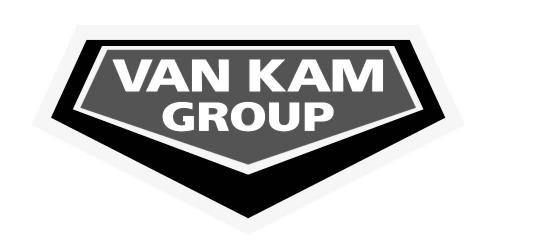

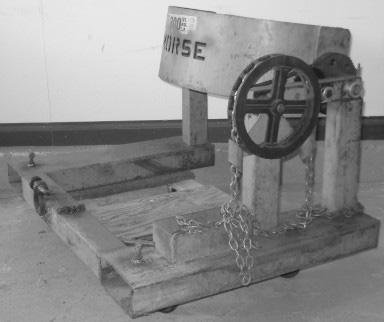



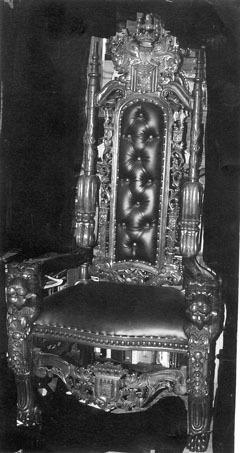










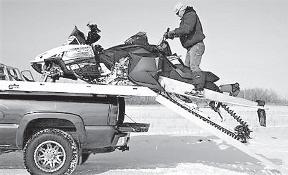
























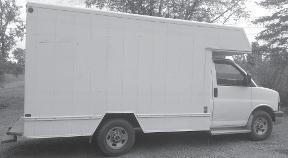


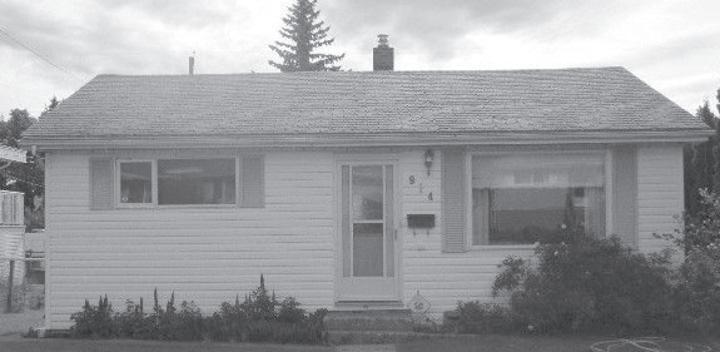






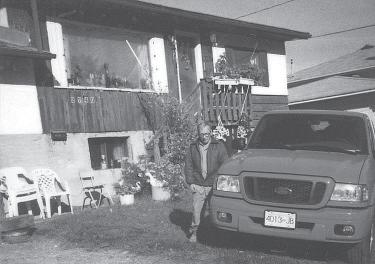




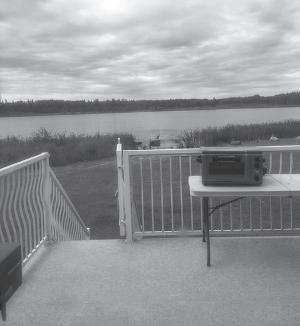








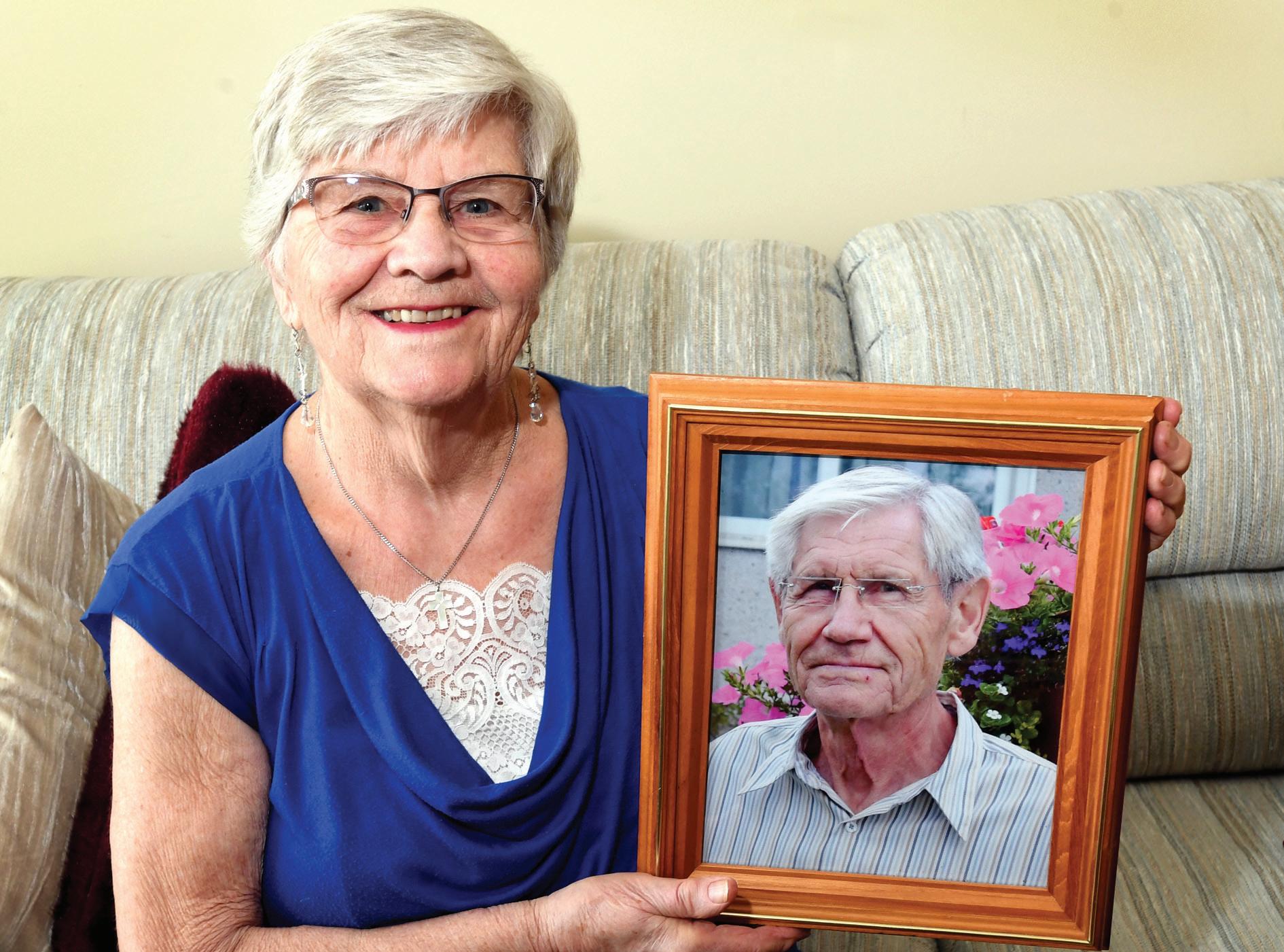
Long time Prince George resident Rosanna (Sawatzky/ Dyck) Konrad was born in 1932 in Grande Prairie, Alberta. Her parents Heinrick and Helena Sawatzky were German speaking Mennonites from near Kiev in Russia. They left in a wave of German Mennonite migration in 1925 and settled in Grande Prairie in 1926. She lost her father when she was four, leaving her mother with eight children. Her mother passed away when Rosanna was seven. Rosanna was adopted by Issak and Tina Dyck while her siblings were taken in by other families.
After high school she worked in Grande Prairie at a bank and attended the Baptist Leadership Training School in Calgary before going to Vancouver to train as a teacher in 1954.
In Vancouver a friend introduced her to Daniel Benjamin Konrad, a second-year medical student at the University of British Columbia. She completed her teacher’s training and taught in Surrey until June of 1957; she married Dan two

months later. Rosanna taught in New Westminster for two years while Dan was finishing medical school, internship and residency training.
Dan was born in 1930 in LaGlace, Alta. the fifth of eight children. His parents were also Mennonites of German descent living in Russia. His family left the country in the same wave of migration as Rosanna’s parents. They first immigrated to Mexico and then to Canada in 1927.
The Konrad family moved to Abbotsford in 1950 where Dan completed Grade 13 at Philip Sheffield High School.
He studied Arts at UBC from 1951-54 and went on to attend medical school. Dan graduated from UBC in 1958 as a general practitioner, interned for one year at the Vancouver General Hospital and did one year of surgical residency at the Shaughnessy & Grace Hospital
in Vancouver.
In 1960 they moved to Prince George to cover the general medical practice of Dr. John Willms for two years. The two years became three years and a medical clinic was formed between Drs. Dan Konrad, Dennis Clark and John Willms.
From 1967-69 the Konrad’s, including three young children, lived in the Democratic Republic of Congo while Dan worked at a missionary hospital. It was there that Dan was the doctor that delivered their fourth child Erin, who was born in the small village of Kijiji in 1969.
In 1970 Dan did a three-year residency in surgical ophthalmology in Montreal at the Royal Victoria Hospital and McGill University Health Centre. He set up his own ophthalmology clinic in Prince George in 1973. Dan retired from his medical surgery practice in 1996 but continued to practice one day a week for the next 15 years at the Gurney Optical Clinic.
Dr. Daniel Konrad was inducted into the Northern Health Medical Hall of Fame in 2014 in recognition of 54 years of outstanding medical service to
the community and the hospital of Prince George.
Dan and Rosanna have three children; Laurel Ann, Daniel Alan, and Nathan Paul. A fourth, daughter Erin Frances, was lost in a tragic car accident in 1989 at the age of 19. The couple has nine grandchildren. Dan and Rosanna are both charter members of the Westwood Mennonite Brethren Church which began as the Peden Hill Mennonite Brethren Church in 1960. Rosanna taught Sunday school and helped with Pioneer girls. She sang in the church choir for many years and was also a member of a triple trio called the Instruments of Praise. She is still an active member of the church and more recently volunteered with the Salvation Army quilters. She loves to entertain friends and family on special occasions and writes song lyrics to fit those special occasions.
She enjoys writing poems and one of her favourite hobbies is scrapbooking. As each grandchild graduates from high school she creates a scrapbook album of their lives up to that point. Rosanna and Dan have
been strong supporters of the Ness Lake Bible Camp and the development work of the Mennonite Central Committee. They are also avid supporters of the Prince George Symphony Orchestra and sponsored their production of the Brahms Requiem in 2008 in memory of their daughter Erin.
Rosanna reflected back and said, “In 1967 we spent two years in the Belgian Congo in Africa as volunteers for the Mennonite Brethren Church and in 1992 our family traveled to Irapuato, Mexico where Dan’s parents first lived when they came over from Russia.
“We traveled quite a bit as a family, volunteered through our church and spent many happy days out at our Ness Lake property. Our church and our faith were a huge part of our lives.
“We were married for 60 years when sadly Dan passed away due to a massive heart attack at the age of 87. Dan was a good husband, a good role model and father to our children and he loved me and our family. For him, his family was always first. I feel that God guided us through it all.”



Frank PEEBLES Citizen staff fpeebles@pgcitizen.ca
Like a city full of cats, Prince George gets to play with string all this week.
For the second time in as many years a team of local knitters and crocheters, spinners and weavers are pulling back the curtain on a festival of handmade textiles.
Fibre Fest 2018 is coming together on Sept. 16, and the runway into that event is the Great Northwest Yarn Crawl.
The yarn crawl is a communitybuilding event that began in June. It is a passport program whereby enthusiasts are directed to yarn stores across the region, all of which are participating in the contest. It’s the event organizers’ way of introducing the yarn users of the area to all the resources available throughout the area.
“The yarn crawl finishes up Sept. 9. There is still time to take part in that,” said Bonne Leiphart, one of the founders of the event. “We are trying to nudge people to get out there and try more stores. We have nine on the list and we are very excited to include Alberta, we have a store in Sexsmith participating, so we even changed the name to The Great Northwest Yarn Crawl. We also got a lovely donation of a prize and well-wishes from a store in Edmonton that isn’t on the yarn crawl list but just
wanted to encourage us and give us some solidarity.”
Passports to obtain verifications on the yarn-themed scavenger hunt can be picked up in any of the participating stores: Darling Deviance, Ewe’s Knitting, Faking Sanity, Hippy Strings, Impossible Knot, The Olde Spinning Wheel, Top Drawer, Vanderhoof Department Store, and Yarn & Sew On.
For instructions on how to turn your completed passport pages into prizes, visit the official organization website at www.playing-with-string.com.
The festival on Sept. 16 is a full day of textile activities and interactions.
“We are very excited. We have lots of new things going on this year,” said Leiphart, building on the lessons of last year. “We really put the focus on workshops and demonstrations.”
There is no charge to attend, and all levels of experience or curiosity are welcome.
The instructors and presenters this year include Natalie Wolfe, Tara Bogh, Sharon Stene, Leiphart, and others. Celebrity knitter Nicky Epstein has donated a number of her personal items like books she’s authored.
Faking Sanity representatives will demonstrate an E-spinner, a new tech tool that aids in the spinning process so people with limited hand capacity can still do it.
“We are having a Fibre Friends Gather Area, a space set aside where
people can bring their own items, people can sit around and talk about things, and there will be a registry there where people can write out the knit group they blong to,” said Leiphart. “I take part in two knit groups in town and I know of at least three more. If you’re travelling, and you want to drop in on a knit group, there has to be some knowledge of that. Some knit groups are just for themselves, a closed group, but a lot of them are open to anyone and that’s a great way to meet new people, spread the word about local knitting, share local knowledge.
“Talking with other people can bring up solutions if you’re having a challenge with a technique or where to find certain things.”
Local band Chilako will perform live music to add some entertainment. There will also be a drop-n-swap this year.
“You bring your own unloved or never-gonna-need-it yarn, you drop it off on the table, and if you spot anything you like on the table, you can take it home with you for free,” Leiphart explained. “If you didn’t bring something to swap, that’s OK, there’s a donation box where you can make a cash contribution and the funds raised from that will go to the Brunswick Street Seniors’ Centre.”
That is the place where Fibre Fest takes place Sept. 16. It is free admission and operates 10 a.m. to 4 p.m.
The annual Parkinson SuperWalk takes place on Saturday, Sept. 8 from noon to 4 p.m. at Lheidli T’enneh Memorial Park’s band shell at the 17th Avenue entrance.
Everyone is welcome to participate and there is two ways to fundraise.
First register and fundraise online at superwalkbc.kintera.org or go offline with a pledge form that is printable from the website at www. parkinson.bc.ca
Bring your pledge form and funds raised to the walk.
Proceeds from SuperWalk will enable the society to invest in research and continue to provide essential programs and services to the 13,000 individuals and their families who live with Parkinson’s disease in BC.
For more information call Betty, Mirela or Jaclyn at 604-662-3240 or toll free at 1-800668-3330 or email events@parkinson.bc.ca.

Citizen staff
If a community group, school or other organization has an idea to improve the health of those living, working, learning and playing in the northern region the IMAGINE Grants program for up to $5,000 is now accepting applications. Northern Health will provide funding to a wide range of community groups and service agencies who are looking to prevent chronic disease and injury or promote health in ways like healthy eating and food security, physical activity and active living and injury prevention. Also on the list of priorities is positive mental health, prevention of substance harm, healthy early childhood development, healthy aging, and healthy school activities.
Since 2009 the IMAGINE Community
Grants have provided funding to 860 projects in northern B.C., including community gardens, programs that promote traditional food harvesting and preservation, walking trail improvements, and sport equipment lending available to the community.
Applicants can apply for as much as $5,000 for their project.
Preference will be given to those where community groups will make a collaborative effort with one another during their project, address something that is missing in the community or help those who are in need or vulnerable.
For more information and to access the complete application guide visit https://www.northernhealth.ca/services/ healthy-living-in-communities/imaginegrants or call 250-565-7390. Application deadline is Sept. 30.



Food for Thought
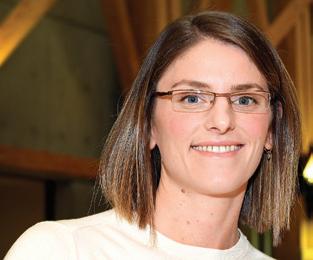
Irecently saw a Malt-O-Meal cereal commercial featuring a mother and her two children sitting in the kitchen of their home. In the commercial, the mother looks at her children, who are wearing costumes and says “My kids have questionable taste in fashion, but they have great taste in cereal,” she then holds up a bag of Cookie Bites cereal and says “Malt-O-Meal, my kids love it for the taste and I love it for the price.”
it’s unsurprising that children would like a bowl of chocolate chip cookies for breakfast...
It’s unsurprising that children would like a bowl of chocolate chip cookies for breakfast, but what did surprise me was the fact that this product was being sold to parents.
It wasn’t so long ago that fun cartoon characters and colourful packaging were the norm when it came to cereal advertising and children were the target audience, not their parents.
Now the guarantee of a cheaper product or more nutritional value helps to sell breakfast cereals. Why the change in marketing?
Over the past decade there has been growing concern over the negative health impact of marketing unhealthy foods to children.
According to a review by the National Academies’ Institute of Medicine, studies show that
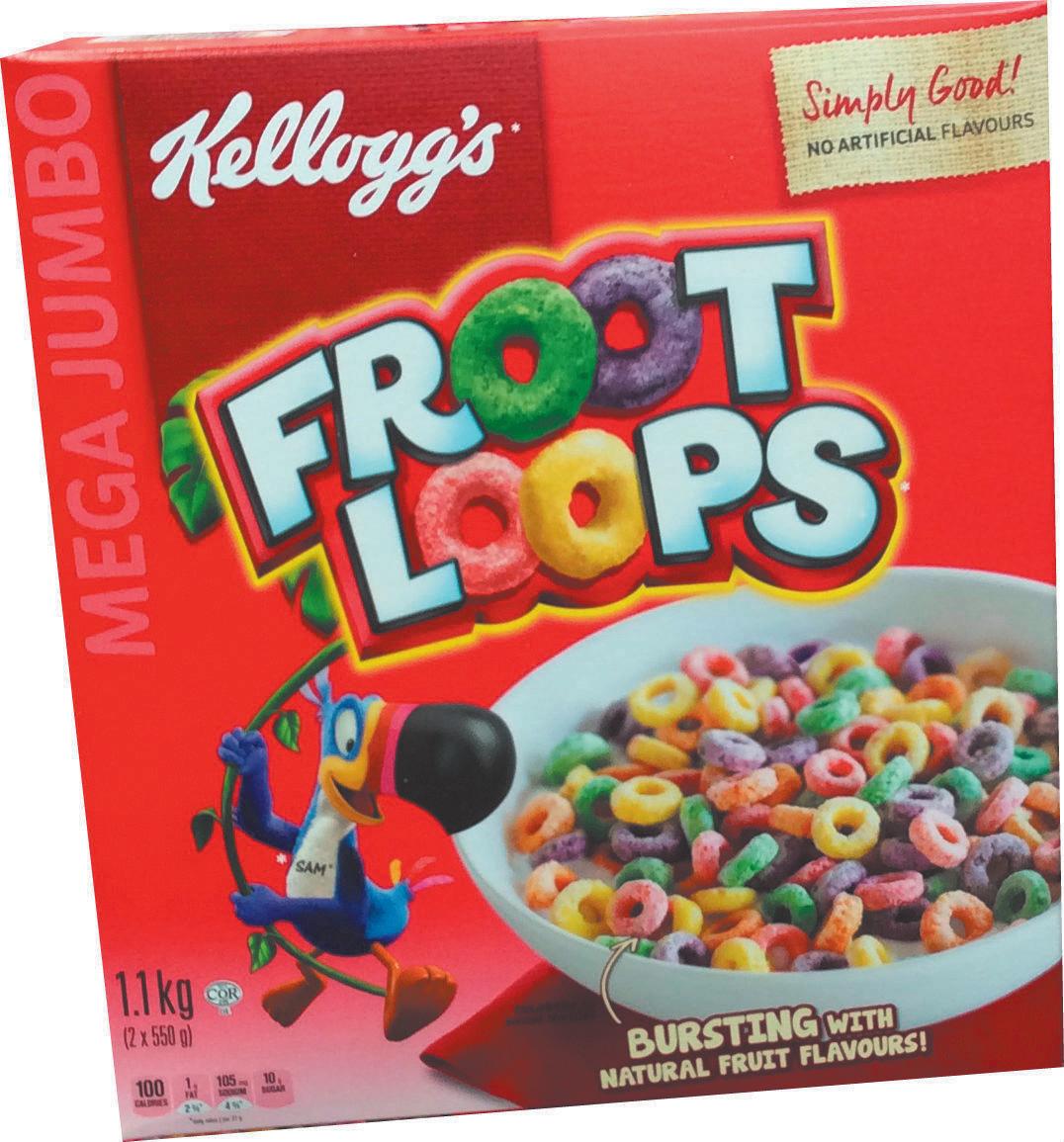
television food advertising affects children’s food choices, food purchase requests, diets, and overall health.
The majority (more than 90 per cent) of food and beverage advertisements viewed by children and teens online are for processed foods and beverages high in fat, sodium or sugar.
For the past 10 years the
food and beverage industry in Canada has set its own standards and self-regulated its marketing through the Canadian Children’s Food and Beverage Advertising Initiative (CAI). The program is not mandatory and the nutrient criteria is determined by the industry and is nutritionally weak overall. Lucky Charms and Froot Loops

would meet the criteria established in the grain category.
In 2015 the federal government began to take steps in restricting the marketing of unhealthy foods and beverages to children in an effort to curb the rising rates of obesity and chronic disease, as part of Health Canada’s Healthy Eating Strategy.
Front-of-package labeling for foods higher in sugar, sodium and saturated fat was also introduced. Following public consultation in the summer of 2017, Health Canada produced a report summarizing the feedback received and is now working to establish marketing requirements. There has been push-back from industry stakeholders, including the Association of Canadian Advertisers, who said the proposed restrictions are “significantly overboard” and the restrictions applying to teenagers younger than 17 were “paternalistic.”
In 2016, Bill S-228 (the Child Health Protection Act) was introduced in Senate to amend the Food and Drugs Act, prohibiting food and beverage marketing from being directed at children. The Bill was passed by the Senate and is now at the Report Stage in the House of Commons.
Since changes to the marketing of foods and beverages seems almost inevitable, advertisers are now shifting towards parents as their target audience.
Now it becomes even more important to be aware of the nutritional content of the products you’re buying, the validity of product claims and the value of food to the overall health of you and your family.
Healthy eating habits are developed from a young age and can contribute to development and overall health later in life. For more information on the effects of marketing foods and beverages to children and to see what Dietitians of Canada has done in this area visit: www. dietitians.ca/marketingtokids.
Kelsey Leckovic is a Registered Dietitian with Northern Health working in chronic disease management.

Summer is over and I feel robbed of a beautiful August. It seems likely that August will forever be wildfire season in our neck of the woods but I am not particularly happy about it. Who is?
There are a few things that I will miss about August going forward.
For one, the bright summer afternoons that hang around until dusk. I will miss the early evenings, camping in August, gathered around a campfire without the biting cold of the fall nights.
I miss campfires in August. I miss feeling relaxed and not having a bag packed in case we

have to evacuate. I miss watching a lightning storm without feeling worried.
I miss not having to reassure my kids that the bush behind our house probably won’t start on fire but explaining that we have a plan “just in case.” I miss not viewing the forest as an enemy.
There are a few things, however, that the fires have brought besides the wholesale destruction of forest, animal habitats
On Aug. 1 of each year, a strange memorial is held in an affluent New York State town not far from Manhattan. On the grounds of the Russian Orthodox Convent is a memorial dedicated to General Andrey Andreyevich Vlasov and the Russian Liberation Army. He was hung by Stalin’s regime on that date in 1947.
The ceremonies are in praise of Vlasov’s efforts to topple Stalin and his cohorts. The story of how Vlasov became one of the most hated names during the Soviet regime is almost always omitted from histories of the Second World War. Yet he and his RLA (the Russian initials are ROA) could have made a major difference on the Eastern Front during World War Two.
Vlasov joined the Red Army in 1919 during the Red-White Civil War in Russia. His promotion through the ranks to General followed. In 1938 he was assigned to China to act as a military advisor to Chiang Kai-shek until the following year.
This turned out to be a blessing as he was “out of sight, out of mind” during Stalin’s purge of the Red Army officer corps during which many were executed or sent to the Gulags, often cited as one reason for the poor performance of the U.S.S.R. in the early months of the war. When Hitler invaded the U.S.S.R., Vlasov was in command of units of the Red Army in Kiev.
Even though Stalin had refused permission to withdraw, Vlasov led 15,000 troops to escape before the city was encircled by German forces. Almost half a million Red Army soldiers were captured and casualites exceeded 700,000, the largest defeat in Red Army history. Having escaped, Vlasov was congratulated by Stalin and given a command during the defence of Moscow.
After the German forces were defeated, he was awarded the Order of the Red Banner for his efforts, one of the highest medals of the Soviet state.
Stalin decided that the seige of Leningrad (now St. Petersburg) had to be broken and gave command of the relief army to Vlasov.
Unfortunately, to get to Leningrad the army had to cross the Pripet Marshes, a vast area of wetlands in western Russia that limited travel of military equipment to a few isolated corridors. German invasion forces went around the Marshes on their way east but Vlasov’s orders took him along the few routes that crossed them. This made it easy for the Germans to destroy his army, which they did. As he had in Kiev, Vlasov asked Stalin for permission to retreat to save his army. Stalin denied the request. Vlasov and the
and property.
We went camping in August a few weeks ago at McLeod Lake and it was wonderful, even though it was smoky, even though there was no campfire and even though it felt eerie and dangerous.
Prince George was under a blanket of smoky fog and on our drive north, the smoke got worse and worse. We felt like we were making a very bad choice but suddenly, after Summit Lake, the smoke started to thin out and we could see the sky again. I realized that I had not seen a blue sky for weeks and I started to feel better.
By the time we got to McLeod Lake, the smoke was nearly
remains of his force were captured and Vlasov himself imprisoned by the Nazis.
While in a German prison, Vlasov came to view Stalin as a tyrant, one who had made huge mistakes in the campaign which had cost many lives. Nor was Stalin a popular leader, having killed or sent to the gulags millions of those he viewed as a threat.
The deliberate starvation of the Ukraine (the “Holodormo”) saw the death of over six million souls and other ethnic groups had been forced to relocate to remote locations. Vastly exceeding Hitler, Stalin may have killed as many as 20 million or more. The Red Army had lost a substantial part of its command structure.
If one wanted to find those opposed to the Soviet regime it was not difficult. With a little prompting from the Germans Vlasov agreed to create a Russian army that would fight alongside of the Germans. The Russian Liberation Army was not to be a Nazi force nor would it fight against any but the Soviet forces. It was an anti-Communist army dedicated to removing Stalin and his ilk from power.
With German consent, Vlasov crisscrossed Germany and occupied Russia speaking to Russian POWs asking them to join his crusade. The POWs were given permission to attend a massive rally in Berlin to hear Vlasov speak, travelling to and from the meeting independently. Films of that event show a massive audience of POWs listening to his talk.
Leaflets were circulated urging the POWs to join the army to liberate Russia and were also dropped on Red Army positions to encourage desertion. Over a short time roughly one million responded to the call. They were equipped with uniforms and equipment by the Germans but not allowed to join the fight.
There was a major problem. Hitler wanted large portions of western Russia for his “Lebensraum,” the expansion of Germany by colonization which was to provide a buffer against future Russian aggression.
An independent Russia, which was Vlasov’s goal, was certainly not favoured. Hitler and his racial advisors viewed Slavs as “Untermensche” (“sub-humans”). Although German field officers used Slavs as both support personnel and in combat this was contrary to Hitler’s racial views.
So while efforts to create the RLA proceeded and men trained there was no
Citizen news service
SURREY — Public health officials are investigating a number of cases of Legionnaires’ disease contracted in Surrey.
Fraser Health doesn’t say how many people are affected, but says it is looking into the source of a cluster of cases in Surrey’s Guildford neighbourhood.
Fraser Health says most people in good health do not get the disease when exposed to the bacteria, but the elderly, smokers and people with chronic lung conditions or compromised immune systems are at higher risk.
Symptoms include fever, shortness of breath, severe fatigue, abdominal pain, diarrhea, and resemble symptoms often found in cases of pneumonia. Legionnaires’ disease is caused when people breathe in small droplets of water containing the bacterium known as Legionella, often found in freshwater, groundwater and soil, as well as cooling towers, hot tubs, and larger plumbing systems.
The statement says anyone who travelled to that area of Surrey since Aug. 21 should speak with their doctor about testing and treatments.
non-existent and the day was utterly beautiful. With no campfire to tend, we could take walks at our leisure, explore the beach, swim in the icy cold water (only the kids did that) and discover. We found an enormous snake skin from a garter snake (hopefully) that was at least four or five feet long (shudder).
We began to let our kids bike to the playground themselves and loosened our city-fear of strangers and horrible things happening. Everyone camping, and there was not many of us, was spending time with their families and enjoying life outside of the smoky haze that was Prince George.
clear idea of how this new army would be used, if at all. It remained in a state of limbo as the German retreat in the East commenced and continued. The Wehrmacht desperately needed reinforcements; Vlasov and the RLA were more than willing to fight the Red Army but the limbo continued. The troops that might have not merely fought the Red Army but perhaps encouraged an open revolt against Stalin were left to stagnate.
Finally, in February 1945, the RLA saw its first – and only – action against the Red Army in Czechoslovakia.
Defeated by an overwhelming force, the RLA retreated to Prague. The Prague Resistance had revolted pitting Czech citizens against German SS units. The RLA joined the Resistance against the Germans. There are conflicting reports of anti-Semitic behaviour by the RLA during the Prague Uprising and earlier statements by RLO leaders that remain contentious to this day.
The Red Army captured Vlazov later in 1945. He was sent to the Lubyanka Prison in Moscow, tried and executed as a traitor the following year.
The German army was not limited to German soldiers. Swedes, Norwegians, Dutch, Romanians, Italians, French, Hungarians and other nationalities had volunteered to serve on the Eastern
Later in the afternoon, we started to see large flakes of what we thought was ash falling from the sky like pinwheels. When we looked closer however, we found they were pinecone scales. Pine trees and pinecones need fire to explode their seeds which are then blown about by the jet stream and planted elsewhere.
The fires, miles and miles away, were regenerating the forest and we were able to see a real-world benefit of fires on the lifecycle of the forest.
It was humbling to really see how connected we all are and perhaps we need these fires to encourage sustainability and for us to remember that we are all in this together.
Front in small and large numbers. They were not classed as Untermensche.
Prejudice, be it based on race, ethnicity, religion, gender or sexual preference is still with us. Often, it seems to peak before it then isolates and destroys those who hold it. Unhappily, it too often leads to prejudice by its victims against those who victimized them as the cycle continues generation after generation. It is not restricted to any location as it surfaces in every continent. In its most virulent form, it can lead to brutality and wars; in it’s milder form it creates jobs and social discrimination such as we now see with First Nations Canadians. Might Hitler have defeated the U.S.S.R. if Vlasov’s RLA had been allowed to fight the Red Army? Perhaps. Certainly it would have delayed the Red Army victory, for weeks, months, or even years.
We humans have never learned that cutting off one’s nose to spite one’s face is not a winning idea. Our new world needs diverse talent from every source. One reason for Canada’s favourable status in the world today (most respected, best place to live, most livable cities, and other accolades) is our program of multiculturalism, the goal of which is to give equal opportunity to every Canadian, regardless of where they or their parents were born. We still have a long way to go.





Nineteenth-century British writer Eliza Tabor said, “Disappointment to a noble soul is what cold water is to burning metal; it strengthens it, tempers, intensifies, but never destroys it.”
Disappointment is a reality in the life of every person, yet far too often we look upon it as failure. If we apply for a job and don’t get hired, if we ask a person out and they say no, or if we try out for a team and get cut, we feel can’t help but feel a pang of rejection. Disappointment has the potential to destroy us, but it also has the potential to make us great. What determines the difference?
The key is in becoming a “noble soul.” What does that mean, however?
There are many other terms we use for this type of person, resilient, unsinkable and determined, to name a few. Ultimately it is a person who knows that even if they do not achieve their goals, they never have to live with regret because they know that they have done their very best.
We often hear children saying that they are going to be astronauts, play in the NHL or become famous entertainers. It is very tempting to tell them the unlikelihood of these goals and tell them to be “realistic.”
I would adamantly disagree with this. It is important to dream dreams and have goals, no matter how preposterous they may appear. It is in working toward these goals that we develop our character. It is up to the individual to determine when or if they need to divert their attention elsewhere.
While I dreamed of becoming a major league baseball player, I knew quite early in my career that I didn’t have the physical attributes to achieve this goal. Nobody had to tell me this; I could calculate my batting average. That did not stop me from playing the game that I loved and working to be the best that I could be.
It did not take me long to find a path in life where I could succeed, a way to
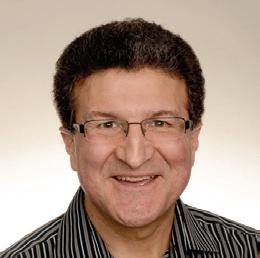
Gerry ChidiaC
make it “to the big leagues” in my own mind. I found a career that I loved, all the while continuing to enjoy watching and playing baseball.
The principles I learned to live by in training, playing, sitting the bench and even being cut from the team helped to make me the growth-minded, resilient person I am today.
How then do we teach this principle?
One way is to make clear to our young people that they are in charge of their own lives. It is not in their genes, who their parents are, or where they live. Those are external factors which can make achieving a goal easier or harder, but they do not determine a person’s ability to achieve greatness.
Another key principle is that there is no such thing as failure, there are only degrees of success. I may not have gotten a passing mark on a test, but if I can determine what I need to do to improve my performance and then display the perseverance to carry out a plan for improvement, I have indeed been successful.
As each new group enters my classroom, I am reminded that I am surrounded by greatness. The gifts of each person may or may not be obvious. My job is to teach them that they are the ones who determine their success, to give them the tools they need to develop their gifts, to cheer them on when they try and to foster the self-confidence to keep moving forward.
Ultimately, the words of the great football coach Vince Lombardi ring true, “It’s not whether you get knocked down. It’s whether you get up.”
Gerry Chidiac is a champion for social enlightenment, inspiring others to find their greatness in making the world a better place. For more of his writings, go to www.gerrychidiac.com.
Citizen new service
SOUTH HERO, Vt. — A moose drowned in Lake Champlain after people crowded around the animal to take its picture, Vermont wildlife officials said.
Fish and Wildlife Officer Robert Currier told WCAX that the moose swam across the lake from New York to South Hero, Vermont, on Saturday.
He said it made it onto land but was forced back into the water, likely feeling threatened by onlookers.
The moose succumbed to exhaustion and drowned.
Bernadette Toth was in the area Saturday morning with her 17-year-old
daughter, who was having her senior photos taken.
She saw the moose swim to shore, but left before it re-entered the water. She said there were about half a dozen people nearby and noted that the incident happened near a bike path popular with tourists.
“They made it sound like it was this big mob of people. No, this is a heavy trafficked area for South Hero,” Toth said. “That is always a very busy, busy area.”
Currier said people should keep their distance from moose, adding that the animals respond to threats by leaving an area or getting aggressive.

Christopher Ingraham Citizen news service
Given the choice between shell-on and shell-off pistachios at the grocery store, I always choose the former.
The already-shelled pistachios seem like an extravagance reserved for investment bankers and derivatives traders. People with student loans have no business indulging in pre-shelled pistachios, I tell myself. Each nut I split with my bare hands yields not only a tasty treat but also a sense of thrift and virtue.
My beliefs about pistachios are based on assumptions about their price. And we here at Wonkblog tend to be skeptical of assumptions, being believers in the power of empiricism even when it comes to pistachios. So, with the blessing of an indulgent editor, I decided to run the following cost-benefit analysis of shelled vs. unshelled pistachios to test whether my assumptions were correct.
What I learned shook me to my salty core.
My materials were an eight-ounce bag of shellon pistachios and a six-ounce bag of the shell-off variety, purchased from my local grocery store. A quick price-per-ounce analysis seemed to confirm my priors: The shell-on pistachios cost 75 cents per ounce, while the shell-off kind were twice as expensive at $1.50 per ounce.
But that’s not the comparison we want.
While the contents of the pricier shell-off bag are 100 percent edible, the shell-on pistachios contain an unknown percentage of shells and empty space. For a proper pistachios-to-pistachios comparison, we need to convert a quantity of shell-on pistachios to its shell-off equivalent.
So I took a cup of shell-on pistachios and set about the tedious work of removing the shells. I was somewhat surprised to find that in the end, it boiled down to half a cup of unshelled product. You need two cups of shell-on pistachios, in other words, to get one cup of edible shell-off nuts.
The two cups of shell-on pistachios in the eight-ounce bag worked out to exactly one cup of ready-to-eat nuts. The six-ounce pre-shelled bag, on the other hand, contained 1½ cups of
ready-to-eat nuts. I converted the cost per bag to cost per shelled cup and was shocked to find they were identical: $5.99 per cup of prepared pistachio. Shell-on or shell-off, in other words, price-wise it makes zero difference when it comes to what actually ends up in your belly.
But the analysis doesn’t end there.
Removing shells from pistachios takes time, after all, and as good economically-minded empiricists, we generally accept Benjamin Franklin’s dictum that time is money.
So we can’t truly compare the costs of shell-on and shell-off pistachios without accounting for the indirect cost of manual shelling time associated with the former.
The simplest way to do this is assume that a person’s time is worth whatever their boss pays them to go to work: If you make $10 an hour, an hour of your time is worth $10.
So we can multiply a person’s hourly wage by the fraction of an hour it takes to shell one cup of pistachios to determine their true cost per readyto-eat cup when buying the shell-on variety. We don’t need to run this extra step for the shell-off pistachios, which require no additional labor on the purchaser’s part.
I found it took me almost exactly six minutes, or one-tenth of an hour, to manually remove the shells from one cup of shell-on pistachios at a casual pace. That means it takes 12 minutes of shelling time, or one-fifth of an hour, to transform two cups of shell-on pistachios into one cup of shell-off nuts.
Accounting for labour in this way has drastic effects on the true cost-per-shelled-cup of shellon pistachios. If you make $20 per hour, for instance, shell-on pistachios work out to nearly $10 per shelled cup: $5.99 for the nuts, plus $4 in labour to remove the shells. If you make $40 per hour, the cost rises to roughly $14 per shelled cup. Recall that the cost of the shell-off pistachios remains the same regardless of your hourly wage because you don’t need to do any work to remove the shells.
In short, we can conclude that far from being a
luxury, buying shell-off pistachios is in fact the fiscally responsible choice. There is no scenario in which the cost savings of a bag of shell-on pistachios justifies additional indirect expenditure in labour.


Jason Wilson Citizen news service
Purveyors of certain fermented beverages experience a recurring nightmare: They serve an enthusiastic customer a drink for the first time. They tell the customer it is “dry.” Or at least mostly dry. Or at least that its acidity “balances” its sweetness. The customer’s smile becomes a raised eyebrow of confusion. After a sip or two, they declare: “It’s too sweet. I don’t like it.”
And just like that, an entire drinks category is dead to that consumer.
Riesling is one of those categories. Remember the Riesling summers of the late 2000s and early 2010s, when bars were geeking out over the grape? Sadly, there was much confusion. Even though there are many Riesling styles, from bone-dry to dessert, too many consumers perceived it as only sweet. Ironically, by the height

of the revival, Riesling sales were in fact declining.
Now here comes the American cider revival, giving cider its Riesling moment. And those who promote cider are hearing a frustratingly familiar refrain: “I don’t like cider. It’s too sweet.”
Trust me, there are plenty of super-dry ciders available. If your local watering hole pours only a boring, mass-market sweet cider, demand a drier one.
“It’s the number one issue for cider,” says Michelle McGrath, executive director of the U.S. Association of Cider Makers. “People are assuming that ciders are much more sweet than they are.”
For that reason, the association is pushing forward with discussions on how to create a universal dryness scale that cider makers can put on labels, designating dry, semi-dry, semisweet or sweet. The problem is agreeing to a definition of “sweetness” or “dryness.” Can sweetness be measured simply by testing how much sugar remains after fermentation? Or do factors such as acidity affect how people perceive sweetness?
One potential scale being debated by cider makers around the country was developed by the New York Cider Association. Perhaps not surprisingly, it is based on a scale adopted in 2008 by the International

Riesling Foundation.
“People are abusing the word ‘dry’ and will continue to. We can’t stop that,” says Jenn Smith, executive director of the New York group. “But New York is going to adopt this scale whether or not the rest of the country does.”
The Orchard-Based Cider Dryness Scale proposed by the New York association takes into account three factors in assessing perceived sweetness: residual sugar, acidity and tannins. (Yes, cider apples, just like wine grapes, have tannins.) A cider might have eight grams per litre of residual sugar – which sounds “sweet.” But if that cider also has seven grams per litre of malic acid and 700 parts per million of tannins... well, that’s going to be perceived as very dry.
Meanwhile, a cider with less residual sugar, but very low acid and little tannin, is going to be perceived as semidry or even sweet. For those who (like me) got a C in chemistry, this sort of formula may feel a bit complicated. But logic and science are behind it: All these factors can be tested and corroborated in a sensory-analysis lab.
Cider makers in New York’s Finger Lakes region – among them Redbyrd, Kite & String and South Hill – have been using a version of this scale on labels. A number of other well-known producers throughout the Northeast support it. It appears as a line graph on the back label, with a simple dot or “X” along the spectrum from dry to sweet. When I open a cider that uses this scale, I’m rarely, if ever, surprised by the level of dryness or sweetness.
But resistance to the scale has emerged in other regions. “The New York folks fired the first salvo, but it rubbed a lot of people the wrong way,” says Eric West, publisher of the Cider Guide blog and director of the Great Lakes International Cider and Perry Competition, the world’s largest cider judging. The competition already uses a dryness/sweet-

ness scale for its judging categories based solely on residual sugar, using guidelines similar to those applied in the European Union. Anything less than nine grams of residual sugar per litre is classified as “dry.”
Dryness scales have become part of a larger discussion about the lexicon of cider. Last fall, the U.S. Association of Cider Makers released a new style guide. There are now “modern” ciders, made from dessert apples commonly found in supermarkets. And then there are “heritage” ciders, boasting “increased complexity” and “complex aromatics.”
Most significant, heritage ciders use traditional bittersweet or bittersharp cider apples, older heirloom varieties or perhaps even crab apples or foraged wild varieties.
A simple reason some cider makers don’t like New York’s scale: In many parts of the coun-
try they make modern ciders from dessert apples that do not have much in the way of tannins or acidity, so they fear being labeled as overly sweet. Another reason for the pushback has been that the New York scale takes into account only ciders made from 100 per cent apples, pears, quince or related fruits in the pome family. Many popular ciders across the country have all sorts of added ingredients and flavours: hops, berries, spices, tea, ginger and more. Finally, a large contingent of cider makers who have grown out of the craft-beer industry remain deeply skeptical of a wine-based approach. Mike Reis, host of the cider podcast Redfield Radio, wonders how well complex nomenclature will work for, say, German Riesling: “How many people walk into a wine shop and understand what ‘Trockenbeerenauslese’ means?”
